4.20 How the GOATs Trained Their Lead Hand
Use Tiger Woods' lead hand drill to train both sides of the body to work together in the golf swing rather than fighting each other.
The reason is almost definitely because you don't move laterally far enough in the downswing.
As I'm about to show you, the goats all had a tremendous amount of lateral movement in their downswings with rotation, of course, as well as you're going to see in just a moment.
And most amateur golfers that we see in our swing reviews have less than half what the goats did.
Let me show you.
The great Bobby Jones.
Look at the pelvic shift from the belt buckle to belt buckle, from setup to impact.
Approximately 10 inches of pelvic shift.
The great Ben Hogan.
Take a look at his pelvis shift.
Again, it's the core, not the pelvis itself.
The pelvis is what you're seeing as the most obvious reference point, but you've watched his belt buckle all the way into impact.
Eight inches of lateral move into the ball.
Now watch the great Tiger Woods.
Watch how much his belt buckle moves from set up back to where he started, all the way into impact, eight inches of lateral movement with that belt buckle into the ball.
From the face on view, it's pretty clear that the Greats had what looked like a tremendous amount of lateral shift.
And while that's somewhat true, it's a bit misleading to look at it only from the face on view.
So when we look overhead, We'll start to see the truth of what's really happening and start to get a better visual of how the swing really needs to feel and work in order for you to swing like the greatest of all time.
So I've drawn a long vertical line here that shows roughly where the center of Tiger's pelvis is.
You can imagine this is just a line between his two butt cheeks here.
And as he goes to the top of the swing, You'll see he moves in front of it just a little bit to this second line that I have drawn the shorter line on the left.
And then as he goes for starts his downswing, you're gonna see him move in front of that.
But then as he begins to rotate, you can see at this point he's quite a ways in front of it.
But as he rotates back, you'll see he gets much closer to that second line.
That I just that I mentioned where he was at the top of his backswing.
Now this is at impact, and when we look at this from the face on view, we can clearly see the belt buckle or the center of gravity.
The belly button moved eight inches forward, but from the rear view, the back of the pelvis.
We're only seeing a couple inches of lateral movement, and that's because it's really not just a lateral slide.
The relative movement of the the lateral movement of the pelvis is relatively, very, very small.
And I'm going to help you feel this and understand what's really happening here.
So that you can start to get a great visual of what it feels like to swing like the greats.
As you just saw, The goats all have a tremendous amount of lateral movement and rotation that creates the look when you're viewing from face on.
That, their belly button or their belt buckle is moving way farther forward than where it started at address.
Most golfers actually do almost the exact opposite.
They will actually shift backwards if you're really hanging back on your trail foot or they'll shift a little bit but not very far.
They'll stop and then they'll start pushing through with their trail side.
And this is what creates the old chicken wing and scoop and flip.
You have to understand that you've got to move laterally, but the feel of this is very, very difficult for most golfers at first because it involves the lead side of your body helping provide balance in your swing.
I'm going to show you how to start doing this move in your swing and how to start drilling this so that you start getting this feeling of proper shaft, lean and compression.
Let me show you how to drill this.
The key to drilling this move is doing hitting balls with just your lead hand only at first.
This will help get you the feeling of the pendulum action of your shoulder because this is how your arm works.
Your arm is swinging freely from your shoulder.
You don't want to be pulling the club through.
You want the club, your arm to be relaxing so that the hand can decelerate and impact.
And in order to do that, The club head has to be overtaking the hands now.
Golfers are terrified of this because they think that's what leads to a flip and scoop is when the club overtakes your hands, but it has to overtake your hands.
That's where all the speed is.
A lot of times, golfers are trying to hold this off or not allowing it to release properly, and it kills your club head speed.
The reason you flip and scoop is because you're not moving laterally first.
That's the key movement.
And this is what helps create this pendulum action that your hips are swinging laterally, which helps your upper body tilt back, which helps the shoulder go up, this one go down, and that helps create this pendulum action for your hands.
But your hands must actually be actively releasing the club early as you shift laterally.
If you remember, Jack Nicklaus said you can throw the club as hard as you want from the top as long as you're moving left.
That is what you have to feel.
And so the drill for this is to, and I'm going to break this down in slow motion in just a moment, but what you're going to do is start with your lead hand only, take a step with your lead foot, just a little step to help give you some dynamic movement.
So the club's moving one way and you're already starting to get the feeling of falling back into your lead side.
Then from there, don't start turning or trying to pull the club down.
That kills your speed.
What you want to feel is as you take this step, you're just going to let your hips slide laterally.
So your belt buckle is going to move toward the target and this is going to help bring the club and arms down.
But the key here is you've got to start actively using your hand to start releasing the club now.
The trick to doing this is not obviously releasing it like this, you're releasing it like this.
This is what we call ulnar deviation.
You're just taking your thumb from being in this angle with your forearm to being in line with the top of your forearm.
So when you do this with the club, if you just look at it this way.
It's this motion.
This is what you need to actively be doing during the downswing in order to get the club to catch up.
Now, again, you're thinking, oh my gosh, if I do this, I'm going to stick the club in the dirt.
If you don't move laterally, you will, or that you're going to scoop and flip.
If you don't move laterally, you will.
But as you'll see in just a moment, what actually happens is, is this is how your wrist gets into the strongest, most stable position to get it bowed at impact.
You don't try and bow your wrist, you try and deviate your lead wrist.
And obviously this is working with supination of your trail hand, but we're gonna focus just on the lead hand for this video.
As you're doing this, and everything is moving back to the lead side, your wrist is naturally going to start to bow.
You don't try and bow it, you're trying to cast it or throw the club with this motion so that it can catch up.
And so what I want you to practice at first is just making little swings before you start getting into these full shots.
That I'll show in a moment that you're just making little swings and getting your wrist to start to release.
And you want the club to snap past your body, it's not pulling the club or pushing the club, you're wanting that wrist to sling through the ball.
And so that feeling of your hand starting to deviate, and as you start to deviate, you're going to start to rotate it.
This is all going to happen because the club's being swung on an arc, and that's going to help you start to bow this wrist naturally.
These knuckles are going to roll under, and then you're going to zing the club through and get it to come around to a full release.
And your checkpoint for this release is that your palm should be facing the sky in the follow-through.
If your palm's facing like this, you didn't let the club release.
You held the release off.
But you want to feel that the club fully takes over the palm of his face in the sky and the club head is slightly angled in.
So now when we start to put all this together, so I'm going to take a step or I'm going to step to the left as the club's going back to the right.
So I'm just kind of doing this motion and then let it release.
More importantly, actually help it release.
Start getting that club to pass your hand so you can start to hear a little swoosh.
So do this without a ball first.
I'm going to take a step and I hear a little swoosh there.
That's what I'm looking for.
Take a step, swoosh.
Now let's take a look at this in slow motion so you can start to understand what's happening.
So I did these shots in 10 yard increments from 55 yards to about 95 yards of carry.
And this will help you start to see what you can do out on the golf course or on the range.
When you're practicing this, to help you understand how far you should hit these.
This is not about power and speed when you're doing it with just your lead hand because it obviously needs the trail side to help out with power.
But it'll start to give you an idea of how the technique of this is going to help you hit the ball far without you trying to swing hard.
So I'll play this one first.
This is the shortest one.
So this one's only 55 yards of carries.
And these are all done with eight irons.
So as I go back, you'll see that my feet are pretty quiet on this one.
So I'm not going to use my body very much to help out here.
I'm going to start to move laterally, as you'll see here, the swing centers, these orange circles.
My pelvic swing center is in front of my chest swing center as it needs to be.
And then you'll see I'm starting to early, like way back here, immediately starting to try and get that club head to overtake my hands with this ulnar deviation, This getting that thumb to point down toward the ground.
And I'm holding on to the club firmly with the last three fingers.
I'm not just pushing on it with my thumb, I'm starting to pull down or hold on to it firmly with the three fingers.
I can use my forearm to start to release that golf club and you'll see that.
By the time I come down into impact, my wrist is bowed and flat, or in a good position there.
And I'm going to come into a short follow-through now as we go to a little bit longer shot.
64 yards.
I'll play this one.
Again, it's not going to be this big powerful swing.
It's just all about getting the timing and sequence of this.
So this one is the first one that I take a little bit of step.
You're going to see here.
So this buys me a little bit more of a dynamic stretch.
So now you'll see that my lead foot is going toward the target while my hand is still going back.
I'm balancing on my right leg.
This is what the golf swing feels like when you start putting it all together.
This is obviously just slowing everything down and just isolating one thing at a time.
And now I'm starting to try and widen this angle between my thumb or between my left arm and shaft.
I'm not trying to get narrow and create a ton of lag.
I'm trying to get rid of all of it so that the club can zip through the ball.
And then you'll see as I do this, it looks like my left wrist is bowing.
I'm not actively trying to do anything.
I'm trying to get into ulnar deviation and that gets me into this flat left wrist and shaffling at impact because my pelvis has moved laterally toward the target.
Now we'll go a little bit longer swing.
So 74 yards, 75 yards.
So each one, again, is 10 yards longer than the last.
Again, not some big powerful swing, but you're going to see the same thing.
But this time my feet are a little bit more active.
So the first one, my feet were kind of frozen to the ground, which is how I see most golfers.
This is a really bad habit.
What you want to do is start getting your feet and your legs to be awake.
So you'll see I actually take a little bit of a step with my right foot and then my left foot.
And so I get a little bit more dynamic stretch.
Pelvis leads.
I'm casting the club as best I can to get that club head to catch back up with the pendulum motion of my left arm.
And now I start to come more around into a full follow through.
You can see that club head starting, the toe starting to be past the heel.
My palm facing up toward the sky.
And then we've got an 84 yard shot, so club head speed's picking up a little bit here.
Sorry about that, we'll play this one through like this.
So now you're going to see the same thing.
My pelvis is just going to move a little bit quicker laterally, that helps move the hands faster.
And now I'm coming around more to a full follow-through, and then we'll look at the last one, 94 yards.
And so now, as we get into this swing, it looks like everything's moving faster.
I have about four miles an hour more club head speed.
What I'm doing to move faster is using my wrist and hand to start casting the club earlier from the top more aggressively, while I'm also moving to the left.
And that gets me again into this nice impact position with shaft lean.
My upper chest is staying back behind my hips, but my hip has moved a great deal laterally.
So if we look at the blue circle, this is where I was at setup.
And now you can see just how far my pelvis, my belt buckle, has moved laterally toward the target.
Now let's take a look at this and compare it to the Goat.
Because he also does this drill, this motion that Tiger is doing in this drill is exactly what we're doing here.
I'm just going to play this a few times.
So you start getting the feeling of the timing and sequence and tempo of this motion.
It's not some big powerful motion.
I'm hitting this ball further on the left, so my arm's going back a little bit further.
But you can see how Tiger takes a little step with his left foot and then moves laterally.
Upper body stays back.
Clubhead coming down.
You can see his clubhead.
Watch how fast that club in his hand moves on the way down.
This is not happening passively.
This is not happening by him just hoping the club's going to magically release.
He is forcing it to release.
He is making that club start to release down immediately from the top.
So now if we start walking through this again you're going to see both of us take a little step.
So watch our left foot here.
Tiger takes a little step.
I take a little step and then the club's going back.
And then again, as we go down, you're going to see the pelvis moving laterally.
And then Tiger's really getting that club to release aggressively.
With that left hand.
And this kind of set this position just after impact or at impact.
Note If we draw some lines here, we measure some angles, you'll see that the swing centers.
We use the belt buckle for a reference.
here, my belt buckle is 20 degrees ahead of the buttons on my shirt.
We'll take Tiger's angle here.
His is about 18.
So this is the feeling that you want to start getting yourself into is that your belt buckle is way closer to the target.
I've just rotated a little bit more, but you still see that the nearly the same angles between the swing centers that your pelvis and your chest or your chest and your belt buckle, which is kind of a more easy point to reference if you don't have software to help you see this stuff but then as we're doing this we're not trying to then open our chest and turn through we're letting that club release and it's pulling us around into a nice full follow-through and this is where you see again the toe of the club is closer to the target than the heel palm is facing the sky and we're nice and balanced up on this lead side so go out and practice if you're really flippy and scoopy and you tend to chicken wing it and you're not hitting the ball clean you're probably pushing way too hard with the trail side of the body and you've got to balance it out using the lead side
La raison est presque certainement que vous ne vous déplacez pas suffisamment latéralement lors du downswing.
Comme je suis sur le point de vous le montrer, les chèvres avaient toutes une quantité énorme de mouvements latéraux dans leurs descentes avec rotation, bien sûr, comme vous allez le voir dans un instant.
Et la plupart des golfeurs amateurs que nous voyons dans nos analyses de swing ont moins de la moitié de ce que les chèvres avaient.
Laisse-moi te montrer.
Le grand Bobby Jones.
Regardez le déplacement du bassin d'une boucle de ceinture à l'autre, de la mise en place à l'impact.
Environ 10 pouces de déplacement du bassin.
Le grand Ben Hogan.
Regardez son déplacement du bassin.
Encore une fois, c’est le tronc qui compte, pas le bassin lui-même.
Le bassin est ce que vous voyez comme le point de référence le plus évident, mais vous avez observé sa boucle de ceinture jusqu'à l'impact.
Huit pouces de mouvement latéral dans le ballon.
Regardez maintenant le grand Tiger Woods.
Regardez à quel point sa boucle de ceinture bouge depuis la mise en place jusqu'à l'endroit où il a commencé, jusqu'à l'impact, huit pouces de mouvement latéral avec cette boucle de ceinture dans le ballon.
À en juger par leur visage, il est assez clair que les Greats avaient ce qui semblait être un énorme déplacement latéral.
Et même si cela est en partie vrai, il est un peu trompeur de ne considérer le phénomène que du point de vue de la face visible.
Ainsi, lorsque nous regardons au-dessus de nos têtes, nous commençons à voir la vérité de ce qui se passe réellement et à avoir une meilleure vision de la façon dont le swing doit vraiment se sentir et fonctionner pour que vous puissiez vous balancer comme le plus grand de tous les temps.
J'ai donc dessiné ici une longue ligne verticale qui montre à peu près où se trouve le centre du bassin de Tiger.
Vous pouvez imaginer qu’il s’agit simplement d’une ligne entre ses deux fesses ici.
Et alors qu'il monte vers le haut de la balançoire, vous verrez qu'il se déplace juste un peu devant elle jusqu'à cette deuxième ligne que j'ai tracée, la ligne la plus courte à gauche.
Et puis, alors qu'il entame son downswing, vous allez le voir se déplacer devant.
Mais alors qu'il commence à tourner, vous pouvez voir qu'à ce stade, il est assez loin devant.
Mais à mesure qu'il tourne vers l'arrière, vous verrez qu'il se rapproche beaucoup plus de cette deuxième ligne.
Je viens de mentionner où il était au sommet de son backswing.
Maintenant, c'est au moment de l'impact, et lorsque nous regardons cela de face, nous pouvons clairement voir la boucle de ceinture ou le centre de gravité.
Le nombril s'est déplacé de huit pouces vers l'avant, mais vu de l'arrière, c'est l'arrière du bassin.
Nous ne voyons que quelques centimètres de mouvement latéral, et c'est parce qu'il ne s'agit pas vraiment d'un simple glissement latéral.
Le mouvement relatif du mouvement latéral du bassin est relativement très très petit.
Et je vais vous aider à ressentir cela et à comprendre ce qui se passe réellement ici.
Pour que vous puissiez commencer à avoir une excellente idée de ce que l'on ressent lorsqu'on se balance comme les grands.
Comme vous venez de le voir, les chèvres ont toutes une énorme quantité de mouvements latéraux et de rotation qui créent l'apparence lorsque vous les regardez de face.
Que leur nombril ou leur boucle de ceinture se déplace bien plus vers l'avant que là où ils ont commencé à l'adresse.
La plupart des golfeurs font en réalité presque exactement le contraire.
En fait, ils se déplaceront vers l'arrière si vous êtes vraiment en retrait sur votre pied arrière ou ils se déplaceront un peu mais pas très loin.
Ils s'arrêteront et commenceront ensuite à avancer avec leur sentier.
Et c'est ce qui crée la vieille aile de poulet et la pelle et le retournement.
Vous devez comprendre que vous devez vous déplacer latéralement, mais la sensation de cela est très, très difficile pour la plupart des golfeurs au début, car cela implique que le côté avant de votre corps aide à assurer l'équilibre dans votre swing.
Je vais vous montrer comment commencer à faire ce mouvement dans votre swing et comment commencer à le percer afin que vous commenciez à ressentir cette sensation de manche, d'inclinaison et de compression appropriés.
Laissez-moi vous montrer comment percer cela.
La clé pour pratiquer ce mouvement est de frapper les balles uniquement avec votre main principale au début.
Cela vous aidera à ressentir l’action pendulaire de votre épaule, car c’est ainsi que fonctionne votre bras.
Votre bras se balance librement depuis votre épaule.
Vous ne voulez pas tirer le club à travers.
Vous voulez que le club, votre bras soit détendu pour que la main puisse décélérer et impacter.
Et pour ce faire, la tête du club doit désormais dépasser les mains.
Les golfeurs sont terrifiés par cela car ils pensent que c'est ce qui conduit à un flip et un scoop lorsque le club dépasse vos mains, mais il doit dépasser vos mains.
C'est là que réside toute la vitesse.
Souvent, les golfeurs essaient de retenir cela ou de ne pas le laisser se libérer correctement, ce qui tue la vitesse de la tête de votre club.
La raison pour laquelle vous retournez et ramassez est que vous ne vous déplacez pas latéralement en premier.
C'est le mouvement clé.
Et c'est ce qui aide à créer cette action de pendule dans laquelle vos hanches se balancent latéralement, ce qui aide le haut de votre corps à s'incliner vers l'arrière, ce qui aide l'épaule à monter, celle-ci à descendre, et cela aide à créer cette action de pendule pour vos mains.
Mais vos mains doivent en fait relâcher activement le club dès que vous vous déplacez latéralement.
Si vous vous en souvenez, Jack Nicklaus a dit que vous pouvez lancer le club aussi fort que vous le souhaitez depuis le haut tant que vous vous déplacez vers la gauche.
C'est ce que tu dois ressentir.
Et donc l'exercice pour cela est de, et je vais décomposer cela au ralenti dans un instant, mais ce que vous allez faire est de commencer avec votre main principale uniquement, faire un pas avec votre pied principal, juste un petit pas pour vous aider à donner un mouvement dynamique.
Donc le club se déplace dans un sens et vous commencez déjà à avoir le sentiment de retomber dans votre camp de tête.
Ensuite, à partir de là, ne commencez pas à tourner ou à essayer de tirer le club vers le bas.
Cela tue votre vitesse.
Ce que vous voulez ressentir, c'est qu'en faisant ce pas, vous allez simplement laisser vos hanches glisser latéralement.
Ainsi, votre boucle de ceinture va se déplacer vers la cible et cela va aider à abaisser le club et les bras.
Mais la clé ici est que vous devez commencer à utiliser activement votre main pour commencer à relâcher le club maintenant.
L'astuce pour y parvenir n'est pas de le relâcher comme ça, mais de le relâcher comme ça.
C'est ce que nous appelons une déviation cubitale.
Il vous suffit de déplacer votre pouce de cet angle avec votre avant-bras jusqu'à ce qu'il soit aligné avec le haut de votre avant-bras.
Donc, lorsque vous faites cela avec le club, si vous le regardez simplement de cette façon.
C'est ce mouvement.
C'est ce que vous devez faire activement pendant le downswing afin de permettre au club de rattraper son retard.
Maintenant, encore une fois, vous pensez, oh mon Dieu, si je fais ça, je vais planter le club dans la terre.
Si vous ne bougez pas latéralement, vous le ferez, ou vous allez ramasser et retourner.
Si vous ne bougez pas latéralement, vous le ferez.
Mais comme vous le verrez dans un instant, ce qui se passe réellement, c'est que votre poignet se met dans la position la plus forte et la plus stable pour se courber à l'impact.
Vous n'essayez pas de courber votre poignet, vous essayez de dévier votre poignet principal.
Et évidemment, cela fonctionne avec la supination de votre main arrière, mais nous allons nous concentrer uniquement sur la main avant pour cette vidéo.
Pendant que vous faites cela et que tout revient du côté conducteur, votre poignet va naturellement commencer à se courber.
Vous n'essayez pas de le courber, vous essayez de le lancer ou de lancer le club avec ce mouvement pour qu'il puisse vous rattraper.
Et donc ce que je veux que vous pratiquiez au début, c'est simplement de faire de petits swings avant de commencer à vous lancer dans ces coups complets.
Je vais vous montrer dans un instant que vous faites simplement de petits mouvements et que vous faites en sorte que votre poignet commence à se relâcher.
Et vous voulez que le club passe devant votre corps, il ne tire pas le club ou ne le pousse pas, vous voulez que ce poignet passe à travers la balle.
Et donc cette sensation de votre main qui commence à dévier, et à mesure que vous commencez à dévier, vous allez commencer à la faire tourner.
Tout cela va se produire parce que le club est balancé sur un arc, et cela va vous aider à commencer à courber ce poignet naturellement.
Ces articulations vont rouler en dessous, puis vous allez faire passer le club à travers et l'amener à se relâcher complètement.
Et votre point de contrôle pour cette version est que votre paume doit être tournée vers le ciel lors du suivi.
Si votre paume est orientée comme ceci, vous n'avez pas laissé le club se libérer.
Vous avez retardé la sortie.
Mais vous voulez sentir que le club prend entièrement le dessus sur la paume de votre visage dans le ciel et que la tête du club est légèrement inclinée vers l'intérieur.
Alors maintenant, quand nous commençons à mettre tout cela ensemble, je vais faire un pas ou je vais faire un pas vers la gauche pendant que le club revient vers la droite.
Donc je fais juste ce mouvement et je le laisse se relâcher.
Plus important encore, aidez-le réellement à se libérer.
Commencez à faire passer ce club dans votre main pour pouvoir commencer à entendre un petit swoosh.
Alors faites-le d’abord sans ballon.
Je vais faire un pas et j'entends un petit swoosh là.
C'est ce que je recherche.
Faites un pas, swoosh.
Voyons maintenant cela au ralenti afin que vous puissiez commencer à comprendre ce qui se passe.
J'ai donc effectué ces prises de vue par incréments de 10 mètres, de 55 mètres à environ 95 mètres de portée.
Et cela vous aidera à commencer à voir ce que vous pouvez faire sur le parcours de golf ou sur le practice.
Lorsque vous pratiquez cela, pour vous aider à comprendre jusqu'où vous devez les frapper.
Il ne s'agit pas de puissance et de vitesse lorsque vous le faites uniquement avec votre main principale, car il faut évidemment que le côté du sentier vous aide avec la puissance.
Mais cela commencera à vous donner une idée de la façon dont cette technique va vous aider à frapper la balle loin sans que vous essayiez de frapper fort.
Alors je vais jouer celui-ci en premier.
C'est le plus court.
Donc celui-ci ne représente que 55 yards de portée.
Et tout cela est fait avec huit fers.
Alors, en revenant, vous verrez que mes pieds sont assez silencieux sur celui-ci.
Je ne vais donc pas beaucoup utiliser mon corps pour aider ici.
Je vais commencer à me déplacer latéralement, comme vous le verrez ici, les centres de swing, ces cercles orange.
Mon centre de balancement pelvien est devant mon centre de balancement thoracique comme il se doit.
Et puis vous verrez que je commence très tôt, comme ici, à essayer immédiatement de faire en sorte que la tête du club dépasse mes mains avec cette déviation ulnaire, ce qui fait que ce pouce pointe vers le sol.
Et je tiens fermement le club avec les trois derniers doigts.
Je n'appuie pas simplement dessus avec mon pouce, je commence à tirer vers le bas ou à le tenir fermement avec les trois doigts.
Je peux utiliser mon avant-bras pour commencer à relâcher ce club de golf et vous le verrez.
Au moment où j'atteins l'impact, mon poignet est courbé et plat, ou dans une bonne position.
Et je vais maintenant faire un bref suivi alors que nous passons à un plan un peu plus long.
64 mètres.
Je vais jouer celui-ci.
Encore une fois, ce ne sera pas un swing aussi puissant.
Il s’agit simplement de comprendre le timing et la séquence de tout cela.
Alors celui-ci est le premier sur lequel je fais un petit pas.
Vous allez voir ici.
Cela me donne donc un peu plus d’élasticité dynamique.
Vous verrez donc maintenant que mon pied avant se dirige vers la cible tandis que ma main continue de reculer.
Je suis en équilibre sur ma jambe droite.
Voilà à quoi ressemble le swing de golf lorsque vous commencez à tout mettre en place.
Il s’agit évidemment de tout ralentir et d’isoler une chose à la fois.
Et maintenant, je commence à essayer d'élargir cet angle entre mon pouce ou entre mon bras gauche et la tige.
Je n'essaie pas d'être trop étroit et de créer beaucoup de décalage.
J'essaie de me débarrasser de tout cela pour que le club puisse traverser la balle.
Et puis vous verrez que lorsque je fais cela, on dirait que mon poignet gauche se plie.
Je n'essaie pas activement de faire quoi que ce soit.
J'essaie d'atteindre une déviation cubitale et cela me met dans ce poignet gauche plat et me fait bouger à l'impact parce que mon bassin s'est déplacé latéralement vers la cible.
Maintenant, nous allons faire un swing un peu plus long.
Donc 74 yards, 75 yards.
Donc, chacun d'eux, encore une fois, est 10 mètres plus long que le précédent.
Encore une fois, ce n’est pas un grand swing puissant, mais vous allez voir la même chose.
Mais cette fois, mes pieds sont un peu plus actifs.
Donc, la première fois, mes pieds étaient en quelque sorte gelés au sol, ce qui est la façon dont je vois la plupart des golfeurs.
C'est une très mauvaise habitude.
Ce que vous voulez faire, c'est commencer à réveiller vos pieds et vos jambes.
Vous verrez donc que je fais un petit pas avec mon pied droit, puis avec mon pied gauche.
Et donc j'obtiens un peu plus d'étirement dynamique.
Le bassin est en tête.
Je lance le club du mieux que je peux pour que la tête du club rattrape le mouvement pendulaire de mon bras gauche.
Et maintenant, je commence à m'orienter davantage vers un suivi complet.
Vous pouvez voir la tête du club commencer, la pointe commençant à dépasser le talon.
Ma paume tournée vers le ciel.
Et puis nous avons un tir de 84 mètres, donc la vitesse de la tête du club augmente un peu ici.
Désolé pour ça, nous allons jouer celui-ci comme ça.
Alors maintenant, vous allez voir la même chose.
Mon bassin va simplement bouger un peu plus rapidement latéralement, ce qui aide à déplacer les mains plus rapidement.
Et maintenant, je me dirige davantage vers un suivi complet, puis nous examinerons le dernier, 94 mètres.
Et donc maintenant, alors que nous entrons dans cette période de transition, il semble que tout va plus vite.
J'ai environ quatre miles par heure de vitesse de tête de club en plus.
Ce que je fais pour aller plus vite, c'est d'utiliser mon poignet et ma main pour commencer à lancer le club plus tôt depuis le haut de manière plus agressive, tout en me déplaçant également vers la gauche.
Et cela me ramène à nouveau dans cette belle position d'impact avec l'inclinaison de l'arbre.
Le haut de ma poitrine reste en arrière de mes hanches, mais ma hanche a beaucoup bougé latéralement.
Donc si nous regardons le cercle bleu, c'est là que j'étais lors de l'installation.
Et maintenant, vous pouvez voir à quel point mon bassin, ma boucle de ceinture, s'est déplacé latéralement vers la cible.
Maintenant, regardons cela et comparons-le à la Chèvre.
Parce qu'il fait aussi cet exercice, ce mouvement que Tiger fait dans cet exercice est exactement ce que nous faisons ici.
Je vais juste jouer à ça quelques fois.
Vous commencez donc à ressentir le timing, la séquence et le tempo de ce mouvement.
Ce n’est pas un mouvement puissant et de grande envergure.
Je frappe cette balle plus loin sur la gauche, donc mon bras recule un peu plus loin.
Mais vous pouvez voir comment Tiger fait un petit pas avec son pied gauche puis se déplace latéralement.
Le haut du corps reste en arrière.
La tête du club descend.
Vous pouvez voir sa tête de club.
Regardez à quelle vitesse le club dans sa main se déplace vers le bas.
Cela ne se produit pas de manière passive.
Ce n'est pas parce qu'il espère simplement que le club va le libérer comme par magie.
Il le force à se libérer.
Il fait en sorte que ce club commence à se relâcher immédiatement depuis le haut.
Alors maintenant, si nous recommençons à parcourir cela, vous allez nous voir tous les deux faire un petit pas.
Alors, attention à notre pied gauche ici.
Le tigre fait un petit pas.
Je fais un petit pas et puis le club repart.
Et puis encore, au fur et à mesure que nous descendons, vous allez voir le bassin bouger latéralement.
Et puis Tiger fait vraiment en sorte que ce club soit libéré de manière agressive.
Avec cette main gauche.
Et ce genre de réglage se positionne juste après l'impact ou au moment de l'impact.
Remarque : si nous traçons quelques lignes ici, nous mesurons quelques angles, vous verrez que les centres de swing.
Nous utilisons la boucle de ceinture comme référence.
ici, ma boucle de ceinture est à 20 degrés devant les boutons de ma chemise.
Nous allons prendre ici l’angle de Tiger.
Il a environ 18 ans.
C'est donc le sentiment que vous souhaitez commencer à ressentir : votre boucle de ceinture est bien plus proche de la cible.
Je viens de tourner un peu plus, mais vous voyez toujours que les angles entre les centres de swing de votre bassin et votre poitrine ou votre poitrine et votre boucle de ceinture sont presque les mêmes, ce qui est un point de référence plus facile si vous n'avez pas de logiciel pour vous aider à voir ces choses, mais alors que nous faisons cela, nous n'essayons pas d'ouvrir notre poitrine et de tourner, nous laissons ce club se libérer et il nous tire dans un joli suivi complet et c'est là que vous voyez à nouveau que la pointe du club est plus proche de la cible que la paume du talon est tournée vers le ciel et nous sommes bien équilibrés sur ce côté principal, alors sortez et entraînez-vous si vous êtes vraiment flippy et scoopy et que vous avez tendance à faire des ailes de poulet et que vous ne frappez pas la balle proprement, vous poussez probablement beaucoup trop fort avec le côté arrière du corps et vous devez l'équilibrer en utilisant le côté principal
La razón es casi con toda seguridad que no te mueves lateralmente lo suficiente durante el downswing.
Como estoy a punto de mostrarles, todas las cabras tuvieron una enorme cantidad de movimiento lateral en sus descensos con rotación, por supuesto, como verán en un momento.
Y la mayoría de los golfistas aficionados que vemos en nuestras revisiones de swing tienen menos de la mitad de lo que tenían las cabras.
Déjame mostrarte.
El gran Bobby Jones.
Observe el desplazamiento de la pelvis desde una hebilla del cinturón a la otra, desde la preparación hasta el impacto.
Aproximadamente 10 pulgadas de desplazamiento pélvico.
El gran Ben Hogan.
Observa el movimiento de su pelvis.
De nuevo, es el núcleo, no la pelvis en sí.
La pelvis es lo que estás viendo como el punto de referencia más obvio, pero has visto cómo su cinturón se doblaba en el momento del impacto.
Ocho pulgadas de movimiento lateral hacia la pelota.
Ahora veamos al gran Tiger Woods.
Observa cuánto se mueve la hebilla del cinturón desde la posición inicial hasta el punto de partida, hasta el impacto, veinte centímetros de movimiento lateral con la hebilla del cinturón hacia la pelota.
A simple vista, parece bastante claro que los Grandes tenían lo que parecía una enorme cantidad de desplazamiento lateral.
Y si bien eso es algo cierto, es un poco engañoso mirarlo solo desde el frente.
Entonces, cuando miramos hacia arriba, comenzaremos a ver la verdad de lo que realmente está sucediendo y comenzaremos a tener una mejor visualización de cómo realmente debe sentirse y funcionar el swing para que puedas hacerlo como el mejor de todos los tiempos.
Así que dibujé una línea vertical larga aquí que muestra aproximadamente dónde está el centro de la pelvis de Tigre.
Puedes imaginar que esto es solo una línea entre sus dos nalgas aquí.
Y a medida que llega a la parte superior del columpio, verás que se mueve frente a él un poquito hacia esta segunda línea que he dibujado, la línea más corta a la izquierda.
Y luego, cuando comienza su downswing, lo verás moverse al frente de eso.
Pero luego, cuando empieza a girar, puedes ver que en ese punto está bastante adelantado.
Pero a medida que gira hacia atrás, verás que se acerca mucho más a esa segunda línea.
Acabo de mencionar dónde estaba en la parte superior de su backswing.
Ahora bien, esto es en el momento del impacto, y cuando lo miramos desde el frente, podemos ver claramente la hebilla del cinturón o el centro de gravedad.
El ombligo se movió veinte centímetros hacia adelante, pero desde la vista trasera, se ve la parte posterior de la pelvis.
Solo estamos viendo un par de pulgadas de movimiento lateral, y eso se debe a que realmente no es solo un deslizamiento lateral.
El movimiento relativo del movimiento lateral de la pelvis es relativamente muy, muy pequeño.
Y voy a ayudarte a sentir esto y a entender lo que realmente está sucediendo aquí.
Para que puedas empezar a tener una buena visión de lo que se siente al balancearse como los grandes.
Como acabas de ver, todas las cabras tienen una enorme cantidad de movimiento lateral y rotación que crea ese aspecto cuando las miras de frente.
Que su ombligo o la hebilla de su cinturón se está moviendo mucho más hacia adelante que donde comenzó al momento de la dirección.
En realidad, la mayoría de los golfistas hacen casi exactamente lo contrario.
En realidad, se moverán hacia atrás si estás muy retrasado con el pie del sendero o se moverán un poco, pero no muy lejos.
Se detendrán y luego comenzarán a avanzar con su lado del sendero.
Y esto es lo que crea la vieja alita de pollo y la cuchara y voltea.
Tienes que entender que debes moverte lateralmente, pero la sensación de esto es muy, muy difícil para la mayoría de los golfistas al principio porque involucra el lado delantero de tu cuerpo que ayuda a proporcionar equilibrio en tu swing.
Voy a mostrarte cómo comenzar a hacer este movimiento en tu swing y cómo comenzar a practicarlo para que comiences a tener esta sensación de eje, inclinación y compresión adecuados.
Déjame mostrarte cómo perforar esto.
La clave para practicar este movimiento es golpear las pelotas sólo con la mano delantera al principio.
Esto te ayudará a sentir la acción del péndulo en tu hombro, porque así es como funciona tu brazo.
Tu brazo se balancea libremente desde tu hombro.
No quieres tirar del palo.
Quieres que el palo y tu brazo se relajen para que la mano pueda desacelerar y impactar.
Y para lograr eso, la cabeza del palo tiene que adelantar a las manos en este momento.
Los golfistas le tienen miedo a esto porque creen que eso es lo que produce un flip and scoop, cuando el palo sobrepasa sus manos, pero tiene que sobrepasar sus manos.
Ahí es donde está toda la velocidad.
Muchas veces, los golfistas intentan contenerlo o no permiten que se libere correctamente, y eso mata la velocidad de la cabeza del palo.
La razón por la que haces un giro y una pala es porque no te estás moviendo lateralmente primero.
Ése es el movimiento clave.
Y esto es lo que ayuda a crear esta acción de péndulo, que tus caderas se balancean lateralmente, lo que ayuda a que la parte superior de tu cuerpo se incline hacia atrás, lo que ayuda a que el hombro suba, este baje, y eso ayuda a crear esta acción de péndulo para tus manos.
Pero tus manos deben realmente estar soltando activamente el palo mientras te desplazas lateralmente.
Si recuerdas, Jack Nicklaus dijo que puedes lanzar el palo tan fuerte como quieras desde arriba siempre y cuando te muevas hacia la izquierda.
Eso es lo que tienes que sentir.
Y entonces el ejercicio para esto es, y lo voy a desglosar en cámara lenta en un momento, pero lo que vas a hacer es comenzar solo con tu mano principal, dar un paso con tu pie principal, solo un pequeño paso para ayudar a darte algo de movimiento dinámico.
Entonces el palo se mueve en una dirección y ya estás empezando a tener la sensación de caer nuevamente hacia tu lado delantero.
Luego, desde allí, no comiences a girar ni intentes tirar el palo hacia abajo.
Eso mata tu velocidad.
Lo que quieres sentir al dar este paso es que simplemente vas a dejar que tus caderas se deslicen lateralmente.
Entonces, la hebilla del cinturón se moverá hacia el objetivo y esto ayudará a bajar el palo y los brazos.
Pero la clave aquí es que tienes que empezar a usar activamente tu mano para empezar a soltar el palo ahora.
El truco para hacer esto no es lanzarlo obviamente así, lo estás lanzando así.
Esto es lo que llamamos desviación cubital.
Simplemente estás moviendo tu pulgar desde este ángulo con tu antebrazo a uno en línea con la parte superior de tu antebrazo.
Entonces, cuando haces esto con el club, si lo miras de esta manera.
Es este movimiento.
Esto es lo que debes hacer activamente durante el downswing para lograr que el palo se ponga al día.
Ahora, de nuevo, estás pensando, oh Dios mío, si hago esto, voy a clavar el palo en la tierra.
Si no te mueves lateralmente, lo harás, o que vas a levantarte y darte la vuelta.
Si no te mueves lateralmente, lo harás.
Pero como verás en un momento, lo que realmente sucede es que así es como tu muñeca llega a la posición más fuerte y estable para arquearse en el impacto.
No intentas arquear la muñeca, intentas desviar la muñeca delantera.
Y, obviamente, esto trabaja con la supinación de la mano trasera, pero en este video nos centraremos solo en la mano delantera.
Mientras haces esto y todo vuelve al lado principal, tu muñeca comenzará a arquearse naturalmente.
No intentas arquearlo, intentas lanzarlo o tirar el palo con este movimiento para que pueda alcanzarlo.
Así que lo que quiero que practiques al principio es simplemente hacer pequeños movimientos antes de empezar a hacer tiros completos.
Eso lo demostraré en un momento, simplemente estás haciendo pequeños movimientos y logrando que tu muñeca comience a soltarse.
Y quieres que el palo pase rápidamente por tu cuerpo, no tirando ni empujando el palo, lo que quieres es que la muñeca atraviese la pelota.
Y entonces esa sensación de tu mano comienza a desviarse, y a medida que comienzas a desviarte, vas a comenzar a rotarla.
Todo esto sucederá porque el palo se balancea en un arco, y eso te ayudará a comenzar a arquear la muñeca de forma natural.
Estos nudillos van a rodar hacia abajo y luego vas a golpear el palo para lograr que gire hasta una liberación completa.
Y tu punto de control para este lanzamiento es que tu palma debe estar orientada hacia el cielo en el seguimiento.
Si la palma de tu mano está orientada de esta manera, no soltaste el palo.
Usted retrasó la liberación.
Pero usted quiere sentir que el palo ocupa completamente la palma de su mano en el cielo y que la cabeza del palo está ligeramente inclinada hacia adentro.
Entonces ahora cuando empezamos a juntar todo esto, voy a dar un paso o voy a dar un paso hacia la izquierda mientras el palo vuelve a la derecha.
Entonces simplemente hago este movimiento y luego lo dejo soltar.
Lo más importante es realmente ayudarlo a liberarse.
Empieza a hacer pasar el palo por tu mano para que puedas empezar a oír un pequeño silbido.
Así que haz esto sin una pelota primero.
Voy a dar un paso y escucho un pequeño silbido allí.
Eso es lo que estoy buscando.
Da un paso y haz un swoosh.
Ahora veamos esto en cámara lenta para que puedas comenzar a comprender lo que está sucediendo.
Entonces hice estos disparos en incrementos de 10 yardas, desde 55 yardas hasta aproximadamente 95 yardas de alcance.
Y esto te ayudará a empezar a ver lo que puedes hacer en el campo de golf o en el campo de prácticas.
Cuando estés practicando esto, te ayudará a entender qué tan lejos debes golpearlos.
No se trata de potencia ni de velocidad cuando lo haces solo con la mano delantera, porque obviamente es necesario que el lado del sendero te ayude con la potencia.
Pero esto empezará a darte una idea de cómo esta técnica te ayudará a golpear la pelota lejos sin que intentes hacer un swing fuerte.
Así que jugaré este primero.
Este es el más corto.
Así que este solo son 55 yardas de acarreo.
Y todo esto se hace con ocho hierros.
Así que cuando regrese, veréis que mis pies están bastante tranquilos en este.
Así que no voy a utilizar mucho mi cuerpo para ayudar aquí.
Voy a empezar a moverme lateralmente, como verán aquí, los centros de swing, estos círculos naranjas.
Mi centro de balanceo pélvico está delante de mi centro de balanceo del pecho, como debe ser.
Y luego verás que estoy empezando muy temprano, como aquí atrás, inmediatamente empezando a intentar hacer que la cabeza del palo supere mis manos con esta desviación cubital, esto hace que el pulgar apunte hacia el suelo.
Y yo sostengo el palo firmemente con los últimos tres dedos.
No solo lo estoy presionando con mi pulgar, sino que estoy empezando a tirar hacia abajo o a sujetarlo firmemente con los tres dedos.
Puedo usar mi antebrazo para comenzar a soltar ese palo de golf y lo verás.
En el momento en que llego al impacto, mi muñeca está arqueada y plana, o en una buena posición allí.
Y ahora voy a hacer un breve seguimiento mientras pasamos a una toma un poco más larga.
64 yardas.
Voy a jugar a este.
Una vez más, no va a ser un cambio tan grande y poderoso.
Se trata simplemente de conseguir el ritmo y la secuencia de esto.
Así que este es el primero en el que doy un pequeño paso.
Lo verás aquí.
Así que esto me da un poco más de estiramiento dinámico.
Ahora veréis que mi pie adelantado va hacia el objetivo mientras mi mano sigue yendo hacia atrás.
Estoy haciendo equilibrio sobre mi pierna derecha.
Así es como se siente el swing de golf cuando empiezas a juntarlo todo.
Obviamente, esto simplemente ralentiza todo y aísla una cosa a la vez.
Y ahora estoy empezando a intentar ampliar este ángulo entre mi pulgar o entre mi brazo izquierdo y el eje.
No estoy tratando de volverme estrecho y crear un montón de retraso.
Estoy intentando deshacerme de todo para que el palo pueda atravesar la pelota.
Y luego verás que mientras hago esto, parece como si mi muñeca izquierda se estuviera arqueando.
No estoy intentando hacer nada activamente.
Estoy tratando de lograr una desviación cubital y eso me lleva a tener la muñeca izquierda plana y arrastrando los pies en el impacto porque mi pelvis se ha movido lateralmente hacia el objetivo.
Ahora haremos un swing un poquito más largo.
Entonces 74 yardas, 75 yardas.
Así que cada uno, de nuevo, es 10 yardas más largo que el anterior.
Nuevamente, no se trata de un golpe muy fuerte y potente, pero verás lo mismo.
Pero esta vez mis pies están un poco más activos.
Así que el primero, mis pies estaban como congelados en el suelo, que es como veo a la mayoría de los golfistas.
Este es un hábito realmente malo.
Lo que quieres hacer es empezar a despertar tus pies y tus piernas.
Entonces verás que en realidad doy un pequeño paso con mi pie derecho y luego con mi pie izquierdo.
Y así consigo un estiramiento un poco más dinámico.
Conductores de pelvis.
Estoy lanzando el palo lo mejor que puedo para lograr que la cabeza del palo se ponga al día con el movimiento pendular de mi brazo izquierdo.
Y ahora empiezo a tener un seguimiento más completo.
Se puede ver que la cabeza del palo comienza a sobrepasar el talón.
Mi palma apuntando hacia el cielo.
Y luego tenemos un tiro de 84 yardas, por lo que la velocidad de la cabeza del palo está aumentando un poco aquí.
Lo sentimos, pero jugaremos esto así.
Así que ahora verás lo mismo.
Mi pelvis se moverá un poco más rápido lateralmente, eso ayuda a mover las manos más rápido.
Y ahora estoy llegando más hacia un seguimiento completo, y luego veremos el último, 94 yardas.
Y ahora, a medida que entramos en este ritmo, parece que todo se mueve más rápido.
Tengo aproximadamente cuatro millas por hora más de velocidad en la cabeza del palo.
Lo que estoy haciendo para moverme más rápido es usar mi muñeca y mi mano para comenzar a lanzar el palo antes desde arriba de manera más agresiva, mientras también me muevo hacia la izquierda.
Y eso me lleva nuevamente a esta agradable posición de impacto con la inclinación del eje.
Mi parte superior del pecho se mantiene detrás de mis caderas, pero mi cadera se ha movido mucho lateralmente.
Entonces, si miramos el círculo azul, aquí es donde estaba en la configuración.
Y ahora podéis ver hasta qué punto mi pelvis, la hebilla de mi cinturón, se ha movido lateralmente hacia el objetivo.
Ahora veamos esto y comparémoslo con la Cabra.
Porque él también hace este ejercicio, este movimiento que Tiger está haciendo en este ejercicio es exactamente lo que estamos haciendo aquí.
Sólo voy a jugar esto unas cuantas veces.
De esta manera, empiezas a tener una idea del momento, la secuencia y el ritmo de este movimiento.
No es un movimiento grande y poderoso.
Estoy golpeando esta pelota más a la izquierda, por lo que mi brazo se va un poco más atrás.
Pero puedes ver cómo Tigre da un pequeño paso con su pie izquierdo y luego se mueve lateralmente.
La parte superior del cuerpo permanece atrás.
La cabeza del palo baja.
Se puede ver la cabeza de su palo.
Observa qué rápido se mueve el palo que tiene en la mano mientras baja.
Esto no está sucediendo de manera pasiva.
Esto no está sucediendo porque él simplemente espera que el club se libere mágicamente.
Él está obligándolo a liberarse.
Está haciendo que ese club comience a soltarse inmediatamente desde arriba.
Ahora, si comenzamos a caminar de nuevo, verán que ambos damos un pequeño paso.
Así que tenga cuidado con nuestro pie izquierdo aquí.
El tigre da un pequeño paso.
Doy un pasito y luego el palo retrocede.
Y luego, nuevamente, a medida que bajamos, verás que la pelvis se mueve lateralmente.
Y luego Tiger realmente está logrando que ese palo se lance agresivamente.
Con esa mano izquierda.
Y este tipo de establece esta posición justo después del impacto o en el momento del impacto.
Nota: Si dibujamos algunas líneas aquí y medimos algunos ángulos, verás que el columpio se centra.
Utilizamos la hebilla del cinturón como referencia.
Aquí, la hebilla de mi cinturón está 20 grados por delante de los botones de mi camisa.
Aquí adoptaremos el punto de vista de Tiger.
El tiene unos 18 años.
Así que esta es la sensación que debes comenzar a tener: que la hebilla de tu cinturón está mucho más cerca del objetivo.
Acabo de rotar un poco más, pero aún se ve que los ángulos entre los centros de swing son casi los mismos que los de la pelvis y el pecho, o el pecho y la hebilla del cinturón, lo cual es un punto de referencia más fácil si no tienes software que te ayude a ver esto, pero mientras hacemos esto, no intentamos abrir el pecho y girar, soltamos el palo y nos lleva hacia un buen seguimiento completo, y aquí es donde se ve de nuevo que la punta del palo está más cerca del objetivo que la palma de la mano hacia el cielo y estamos bien equilibrados en este lado delantero, así que sal y practica si eres muy ágil y tiendes a hacer un ala de pollo y no estás golpeando la bola limpiamente, probablemente estés presionando demasiado con el lado trasero del cuerpo y tienes que equilibrarlo usando el lado delantero.
Der Grund dafür liegt mit ziemlicher Sicherheit darin, dass Sie sich im Abschwung nicht weit genug seitlich bewegen.
Wie ich Ihnen gleich zeigen werde, zeigten alle Ziegen bei ihren Abschwüngen eine enorme seitliche Bewegung, natürlich mit Rotation, und wie Sie gleich sehen werden.
Und die meisten Amateurgolfer, die wir in unseren Schwungbewertungen sehen, haben weniger als die Hälfte von dem, was die Ziegen erreicht haben.
Lassen Sie es mich Ihnen zeigen.
Der großartige Bobby Jones.
Achten Sie auf die Beckenverschiebung von Gürtelschnalle zu Gürtelschnalle, vom Aufsetzen bis zum Aufprall.
Ungefähr 10 Zoll Beckenverschiebung.
Der großartige Ben Hogan.
Schauen Sie sich seine Beckenverschiebung an.
Auch hier geht es um den Rumpf, nicht um das Becken selbst.
Das Becken ist für Sie der offensichtlichste Bezugspunkt, aber Sie haben die gesamte Zeit bis zum Aufprall beobachtet, wie sich sein Gürtel schloss.
Acht Zoll seitliche Bewegung in den Ball hinein.
Sehen Sie sich jetzt den großartigen Tiger Woods an.
Beobachten Sie, wie weit sich seine Gürtelschnalle von der Ausgangsposition zurück in die Ausgangsposition bewegt, bis hin zum Aufprall, 20 Zentimeter seitliche Bewegung mit dieser Gürtelschnalle in den Ball hinein.
Aus dem Gesicht ist ziemlich klar ersichtlich, dass die Großen offenbar eine enorme seitliche Verschiebung aufwiesen.
Und obwohl das teilweise stimmt, ist es etwas irreführend, es nur von der Vorderseite aus zu betrachten.
Wenn wir also nach oben schauen, erkennen wir die Wahrheit darüber, was wirklich passiert, und bekommen ein besseres Bild davon, wie sich der Schwung wirklich anfühlen und funktionieren muss, damit Sie wie die Größten aller Zeiten schwingen können.
Deshalb habe ich hier eine lange vertikale Linie gezeichnet, die ungefähr zeigt, wo sich die Mitte von Tigers Becken befindet.
Sie können sich vorstellen, dass dies hier nur eine Linie zwischen seinen beiden Pobacken ist.
Und wenn er zum höchsten Punkt der Schaukel geht, sehen Sie, dass er sich ein kleines Stück davor zu dieser zweiten Linie bewegt, die ich gezeichnet habe, der kürzeren Linie auf der linken Seite.
Und wenn er dann seinen Abschwung beginnt, werden Sie sehen, wie er sich davor bewegt.
Aber als er dann anfängt, sich zu drehen, können Sie sehen, dass er zu diesem Zeitpunkt schon ein ganzes Stück davor ist.
Aber wenn er sich zurückdreht, werden Sie sehen, dass er dieser zweiten Linie viel näher kommt.
Ich habe nur erwähnt, wo er sich am höchsten Punkt seines Rückschwungs befand.
Dies geschieht beim Aufprall, und wenn wir es von vorne betrachten, können wir die Gürtelschnalle bzw. den Schwerpunkt deutlich erkennen.
Der Bauchnabel ist 20 Zentimeter nach vorne gerückt, von hinten betrachtet jedoch die Rückseite des Beckens.
Wir sehen nur eine seitliche Bewegung von ein paar Zentimetern, und das liegt daran, dass es sich nicht wirklich nur um ein seitliches Rutschen handelt.
Die relative Bewegung der seitlichen Bewegung des Beckens ist relativ, sehr, sehr gering.
Und ich werde Ihnen helfen, dies zu spüren und zu verstehen, was hier wirklich passiert.
Damit Sie eine gute Vorstellung davon bekommen, wie es sich anfühlt, wie die Großen zu schwingen.
Wie Sie gerade gesehen haben, verfügen alle Ziegen über eine enorme seitliche Beweglichkeit und Rotation, die diesen Eindruck erzeugt, wenn man sie von vorne betrachtet.
Das heißt, ihr Bauchnabel oder ihre Gürtelschnalle bewegt sich viel weiter nach vorne als dort, wo sie beim Ansprechen begonnen haben.
Die meisten Golfer machen tatsächlich fast das genaue Gegenteil.
Sie verschieben sich tatsächlich nach hinten, wenn Sie wirklich auf Ihrem hinteren Fuß hängen bleiben, oder sie verschieben sich ein wenig, aber nicht sehr weit.
Sie werden anhalten und dann beginnen, mit ihrer Wegseite weiterzumachen.
Und so entstehen die guten alten Chicken Wings und Scoop and Flips.
Sie müssen verstehen, dass Sie sich seitlich bewegen müssen, aber das Gefühl dafür ist für die meisten Golfer zunächst sehr, sehr schwierig, weil dabei die vordere Seite Ihres Körpers dazu beiträgt, für das Gleichgewicht Ihres Schwungs zu sorgen.
Ich zeige Ihnen, wie Sie diese Bewegung in Ihren Schwung einbauen und wie Sie sie üben, damit Sie ein Gefühl für den richtigen Schaft, die richtige Neigung und Kompression bekommen.
Ich zeige Ihnen, wie Sie das bohren.
Der Schlüssel zum Üben dieser Bewegung besteht darin, die Bälle zunächst nur mit der Führungshand zu schlagen.
Dadurch bekommen Sie ein Gefühl für die Pendelbewegung Ihrer Schulter, denn so funktioniert Ihr Arm.
Ihr Arm schwingt frei von Ihrer Schulter.
Sie möchten den Schläger nicht durchziehen.
Sie möchten, dass der Schläger und Ihr Arm entspannt sind, damit die Hand abbremsen und auftreffen kann.
Und um das zu erreichen, muss der Schlägerkopf jetzt die Hände überholen.
Golfer haben davor große Angst, weil sie denken, dass es zu einem Flip und Scoop kommt, wenn der Schläger Ihre Hände überholt, aber er muss Ihre Hände überholen.
Dort steckt die ganze Geschwindigkeit.
Oftmals versuchen Golfer, dies zu verhindern oder verhindern, dass es richtig losgeht, und das beeinträchtigt die Geschwindigkeit Ihres Schlägerkopfes.
Der Grund für das Umdrehen und Schaufeln liegt darin, dass Sie sich nicht zuerst seitwärts bewegen.
Das ist die Schlüsselbewegung.
Und das ist es, was dazu beiträgt, diese Pendelbewegung zu erzeugen, bei der Ihre Hüften seitlich schwingen, was dazu beiträgt, dass Ihr Oberkörper nach hinten geneigt wird, was dazu beiträgt, dass die Schultern nach oben und diese nach unten gehen, und was wiederum dazu beiträgt, diese Pendelbewegung für Ihre Hände zu erzeugen.
Aber Ihre Hände müssen den Schläger tatsächlich frühzeitig loslassen, wenn Sie sich seitlich bewegen.
Wenn Sie sich erinnern, sagte Jack Nicklaus, Sie könnten den Schläger von oben so fest werfen, wie Sie möchten, solange Sie sich nach links bewegen.
Das ist es, was Sie fühlen müssen.
Die Übung hierfür ist, und ich werde das gleich in Zeitlupe aufschlüsseln, aber was Sie tun werden, ist, nur mit Ihrer Führungshand zu beginnen und einen Schritt mit Ihrem Führungsfuß zu machen, nur einen kleinen Schritt, um Ihnen eine dynamische Bewegung zu geben.
Der Schläger bewegt sich also in eine Richtung und Sie haben bereits das Gefühl, auf Ihre Führungsseite zurückzufallen.
Beginnen Sie dann nicht mit der Drehung und versuchen Sie nicht, den Schläger nach unten zu ziehen.
Das tötet Ihre Geschwindigkeit.
Sie möchten bei diesem Schritt das Gefühl haben, dass Ihre Hüften seitlich gleiten.
Ihre Gürtelschnalle bewegt sich also in Richtung Ziel und trägt dazu bei, den Schläger und die Arme nach unten zu bringen.
Der Schlüssel liegt hier jedoch darin, dass Sie jetzt anfangen müssen, Ihre Hand aktiv zu verwenden, um den Schläger loszulassen.
Der Trick dabei besteht nicht darin, es offensichtlich so freizugeben, sondern dass Sie es so freigeben.
Dies nennen wir Ulnardeviation.
Sie bringen Ihren Daumen einfach aus diesem Winkel mit Ihrem Unterarm in eine Linie mit der Oberseite Ihres Unterarms.
Wenn Sie dies also mit dem Club tun, betrachten Sie es einfach so.
Es ist diese Bewegung.
Dies müssen Sie während des Abschwungs aktiv tun, um den Schläger wieder aufholen zu lassen.
Jetzt denken Sie wieder: „Oh mein Gott, wenn ich das mache, stecke ich den Schläger in den Dreck.“
Wenn Sie sich nicht seitwärts bewegen, werden Sie es tun oder es kommt zu einem Aufschaufeln und Umdrehen.
Wenn Sie sich nicht seitwärts bewegen, werden Sie es tun.
Aber wie Sie gleich sehen werden, passiert Folgendes: Auf diese Weise gelangt Ihr Handgelenk in die stärkste und stabilste Position, um es beim Aufprall zu beugen.
Sie versuchen nicht, Ihr Handgelenk zu beugen, sondern Ihr Führungshandgelenk abzulenken.
Und natürlich funktioniert dies mit der Supination Ihrer hinteren Hand, aber wir werden uns in diesem Video nur auf die vordere Hand konzentrieren.
Während Sie dies tun und sich alles zurück zur Führungsseite bewegt, beginnt sich Ihr Handgelenk natürlich zu beugen.
Sie versuchen nicht, es zu beugen, sondern Sie versuchen, es zu werfen oder den Schläger mit dieser Bewegung zu werfen, damit es aufholen kann.
Ich möchte, dass Sie zunächst nur kleine Schwünge üben, bevor Sie mit den vollen Schlägen beginnen.
Ich werde Ihnen gleich zeigen, dass Sie nur kleine Schwünge machen und Ihr Handgelenk dazu bringen, sich zu lösen.
Und Sie möchten, dass der Schläger an Ihrem Körper vorbeischnellt. Es geht nicht darum, den Schläger zu ziehen oder zu drücken, sondern Sie möchten, dass das Handgelenk durch den Ball schleudert.
Und dann ist da noch das Gefühl, dass Ihre Hand anfängt abzuweichen, und wenn Sie anfangen abzuweichen, beginnen Sie, sie zu drehen.
Dies alles geschieht, weil der Schläger in einem Bogen geschwungen wird, und das wird Ihnen dabei helfen, das Handgelenk auf natürliche Weise zu beugen.
Diese Knöchel werden nach unten rollen und dann werden Sie den Schläger durchschlagen und ihn dazu bringen, sich vollständig zu lösen.
Und Ihr Kontrollpunkt für diese Freigabe ist, dass Ihre Handfläche beim Durchschwung zum Himmel zeigen sollte.
Wenn Ihre Handfläche so zeigt, haben Sie den Schläger nicht losgelassen.
Sie haben die Veröffentlichung hinausgezögert.
Sie möchten jedoch spüren, dass der Schläger die Handfläche Ihres Gesichts in der Luft vollständig einnimmt und der Schlägerkopf leicht nach innen abgewinkelt ist.
Wenn wir jetzt also anfangen, das alles zusammenzusetzen, mache ich einen Schritt oder ich gehe nach links, während der Schläger wieder nach rechts geht.
Ich mache also einfach diese Bewegung und lasse sie dann los.
Und was noch wichtiger ist: Helfen Sie tatsächlich dabei, es freizugeben.
Lassen Sie den Schläger durch Ihre Hand gleiten, sodass Sie ein leises Rauschen hören.
Machen Sie dies also zunächst ohne Ball.
Ich mache einen Schritt und höre dort ein leises Zischen.
Das ist es, wonach ich suche.
Machen Sie einen Schritt, schwupps.
Sehen wir uns das Ganze jetzt in Zeitlupe an, damit Sie verstehen, was passiert.
Also habe ich diese Schläge in 10-Yard-Schritten von 55 Yards bis etwa 95 Yards ausgeführt.
Und dies wird Ihnen dabei helfen, zu erkennen, was Sie auf dem Golfplatz oder der Driving Range leisten können.
Wenn Sie dies üben, hilft es Ihnen zu verstehen, wie weit Sie schlagen sollten.
Wenn Sie es nur mit der Führungshand tun, geht es nicht um Kraft und Geschwindigkeit, da Sie offensichtlich die Kraft der Trailseite benötigen.
Aber es wird Ihnen eine Vorstellung davon geben, wie Ihnen diese Technik dabei helfen wird, den Ball weit zu schlagen, ohne dass Sie versuchen müssen, stark zu schwingen.
Also werde ich dieses zuerst spielen.
Dies ist die kürzeste.
Diesmal sind es also nur 55 Yards.
Und diese werden alle mit acht Eisen ausgeführt.
Wenn ich also zurückgehe, werden Sie sehen, dass meine Füße hier ziemlich ruhig sind.
Ich werde meinen Körper also nicht sehr stark einsetzen, um hier zu helfen.
Ich werde beginnen, mich seitlich zu bewegen, wie Sie hier sehen werden, die Schwungzentren, diese orangefarbenen Kreise.
Mein Beckenschwungzentrum liegt, wie es sein muss, vor meinem Brustschwungzentrum.
Und dann werden Sie sehen, dass ich zu früh anfange, also ganz hinten, und sofort versuche, den Schlägerkopf mit dieser Ulnardeviation über meine Hände zu bringen, sodass der Daumen nach unten zum Boden zeigt.
Und ich halte den Schläger mit den letzten drei Fingern fest.
Ich drücke nicht nur mit dem Daumen darauf, sondern beginne, es mit den drei Fingern nach unten zu ziehen oder festzuhalten.
Ich kann meinen Unterarm verwenden, um den Golfschläger loszulassen, und Sie werden das sehen.
Wenn ich zum Aufprall komme, ist mein Handgelenk gebeugt und flach oder befindet sich in einer guten Position.
Und ich werde jetzt zu einem kurzen Durchschwung kommen, während wir zu einer etwas längeren Einstellung übergehen.
64 Yards.
Ich werde dieses spielen.
Auch hier wird es nicht zu einem so großen, kraftvollen Umschwung kommen.
Es geht nur darum, das richtige Timing und die richtige Reihenfolge zu finden.
Dies ist also das erste Mal, dass ich einen kleinen Schritt mache.
Sie werden es hier sehen.
Das verschafft mir also etwas mehr Dynamik.
Sie sehen jetzt, dass mein vorderer Fuß auf das Ziel zugeht, während meine Hand noch nach hinten geht.
Ich balanciere auf meinem rechten Bein.
So fühlt sich der Golfschwung an, wenn Sie anfangen, alles zusammenzubringen.
Dies verlangsamt offensichtlich alles und isoliert jeweils nur eine Sache.
Und jetzt versuche ich, diesen Winkel zwischen meinem Daumen oder zwischen meinem linken Arm und dem Schaft zu vergrößern.
Ich versuche nicht, mich einzuschränken und eine Menge Verzögerungen zu verursachen.
Ich versuche, alles loszuwerden, damit der Schläger durch den Ball sausen kann.
Und dann werden Sie sehen, dass es, während ich das mache, so aussieht, als würde sich mein linkes Handgelenk beugen.
Ich versuche nicht, aktiv etwas zu tun.
Ich versuche, eine Ulnardeviation zu erreichen, und dadurch bekomme ich ein flaches linkes Handgelenk und wackele beim Aufprall, weil sich mein Becken seitlich in Richtung Ziel bewegt hat.
Jetzt machen wir einen etwas längeren Schwung.
Also 74 Yards, 75 Yards.
Somit ist jeder noch einmal 10 Yards länger als der letzte.
Auch hier handelt es sich nicht um einen großen, kraftvollen Schwung, aber Sie werden dasselbe sehen.
Aber dieses Mal sind meine Füße etwas aktiver.
Beim ersten Mal waren meine Füße am Boden festgefroren, so sehe ich die meisten Golfer.
Das ist eine wirklich schlechte Angewohnheit.
Sie sollten dafür sorgen, dass Ihre Füße und Beine wach sind.
Sie werden also sehen, dass ich tatsächlich einen kleinen Schritt mit meinem rechten Fuß und dann mit meinem linken Fuß mache.
Und so bekomme ich eine etwas dynamischere Dehnung.
Becken führt.
Ich werfe den Schläger so gut ich kann, damit der Schlägerkopf wieder mit der Pendelbewegung meines linken Arms Schritt hält.
Und jetzt komme ich immer mehr dazu, meine Schritte vollständig durchzuziehen.
Sie können sehen, wie der Schlägerkopf beginnt und die Spitze über die Ferse hinausragt.
Meine Handfläche zeigt nach oben zum Himmel.
Und dann haben wir einen 84-Yard-Schlag, also nimmt die Schlägerkopfgeschwindigkeit hier etwas zu.
Tut mir leid, wir werden das so durchspielen.
Jetzt werden Sie dasselbe sehen.
Mein Becken bewegt sich seitlich einfach etwas schneller, das hilft, die Hände schneller zu bewegen.
Und jetzt komme ich eher zu einem vollständigen Durchschwung, und dann schauen wir uns den letzten an, 94 Yards.
Und jetzt, da wir in diesen Schwung kommen, scheint sich alles schneller zu bewegen.
Ich habe eine etwa vier Meilen pro Stunde höhere Schlägerkopfgeschwindigkeit.
Um mich schneller zu bewegen, benutze ich mein Handgelenk und meine Hand, um den Schläger früher und aggressiver von oben zu werfen, während ich mich gleichzeitig nach links bewege.
Und das bringt mich wieder in diese schöne Aufprallposition mit Schaftneigung.
Mein oberer Brustkorb bleibt hinter meinen Hüften, aber meine Hüfte hat sich seitlich stark bewegt.
Wenn wir uns also den blauen Kreis ansehen, sehen Sie, wo ich beim Setup war.
Und jetzt können Sie sehen, wie weit sich mein Becken, meine Gürtelschnalle, seitlich in Richtung Ziel bewegt hat.
Schauen wir uns das jetzt einmal an und vergleichen es mit der Ziege.
Weil er auch diese Übung macht, ist diese Bewegung, die Tiger in dieser Übung macht, genau das, was wir hier machen.
Ich werde das nur ein paar Mal spielen.
So bekommen Sie ein Gefühl für den Zeitpunkt, die Abfolge und das Tempo dieser Bewegung.
Es ist keine große, kraftvolle Bewegung.
Ich schlage diesen Ball weiter links, also geht mein Arm etwas weiter nach hinten.
Aber man sieht, wie Tiger mit dem linken Fuß einen kleinen Schritt macht und sich dann seitwärts bewegt.
Der Oberkörper bleibt zurück.
Der Schlägerkopf kommt herunter.
Sie können seinen Schlägerkopf sehen.
Beobachten Sie, wie schnell sich der Schläger in seiner Hand nach unten bewegt.
Dies geschieht nicht passiv.
Dies geschieht nicht dadurch, dass er einfach hofft, dass der Club auf magische Weise freigibt.
Er zwingt es zur Freigabe.
Er sorgt dafür, dass der Verein sofort von oben loslegt.
Wenn wir das jetzt noch einmal durchgehen, werden Sie sehen, dass wir beide einen kleinen Schritt machen.
Passen Sie also hier auf unseren linken Fuß auf.
Tiger macht einen kleinen Schritt.
Ich mache einen kleinen Schritt und dann geht der Schläger zurück.
Und wenn wir dann wieder nach unten gehen, werden Sie sehen, wie sich das Becken seitlich bewegt.
Und dann bringt Tiger den Schläger wirklich dazu, aggressiv loszulegen.
Mit dieser linken Hand.
Und dadurch wird diese Position direkt nach dem Aufprall oder beim Aufprall festgelegt.
Hinweis: Wenn wir hier einige Linien zeichnen und einige Winkel messen, sehen Sie die Schwungzentren.
Als Referenz verwenden wir die Gürtelschnalle.
hier ist meine Gürtelschnalle 20 Grad vor den Knöpfen meines Hemdes.
Wir werden hier Tigers Perspektive einnehmen.
Er ist ungefähr 18.
Sie möchten also das Gefühl bekommen, dass Ihre Gürtelschnalle dem Ziel viel näher ist.
Ich habe mich nur ein bisschen mehr gedreht, aber Sie sehen immer noch, dass die Winkel zwischen den Schwungzentren zwischen Becken und Brust oder Brust und Gürtelschnalle fast gleich sind. Das ist ein einfacherer Bezugspunkt, wenn Sie keine Software haben, die Ihnen hilft, diese Dinge zu sehen. Aber während wir das machen, versuchen wir nicht, unsere Brust zu öffnen und uns durchzudrehen, sondern wir lassen den Schläger los und er zieht uns herum in einen schönen vollen Durchschwung und hier sehen Sie wieder, dass die Spitze des Schlägers näher am Ziel ist als die Handfläche zum Himmel zeigt und wir sind schön ausbalanciert auf dieser Führungsseite, also gehen Sie raus und üben Sie, wenn Sie wirklich flipperhaft und schaufelnd sind und dazu neigen, den Ball zu verdrehen und Sie den Ball nicht sauber treffen, drücken Sie wahrscheinlich viel zu stark mit der hinteren Seite des Körpers und Sie müssen es mit der Führungsseite ausbalancieren
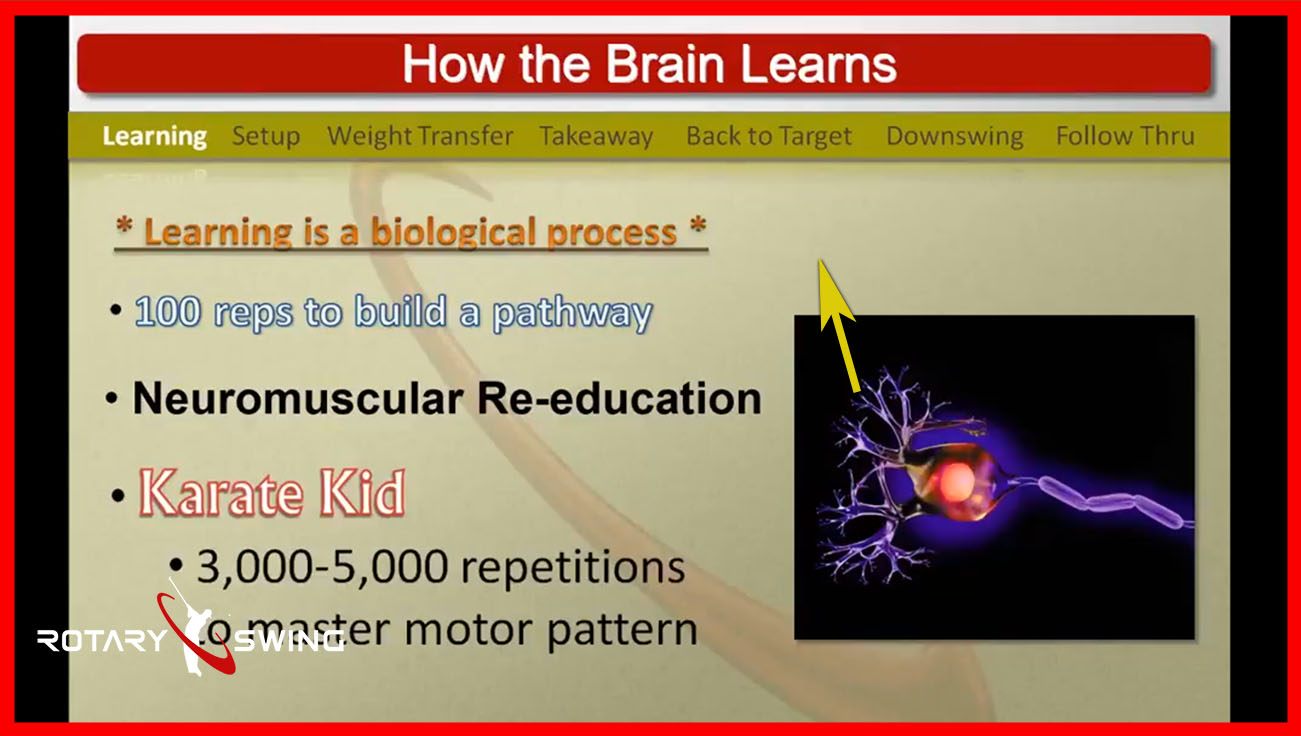
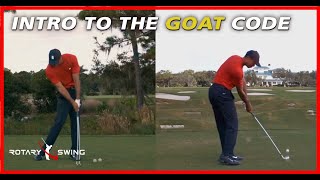
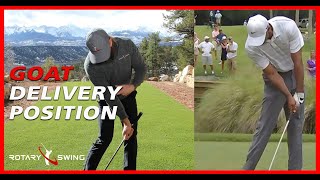

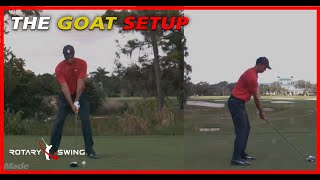
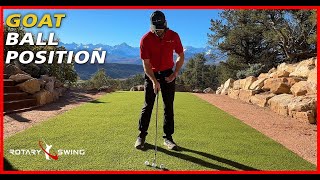
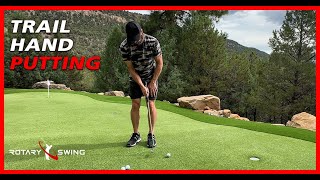




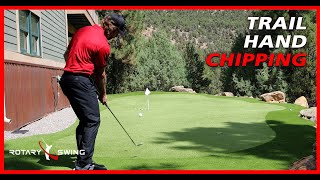
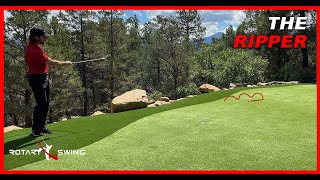
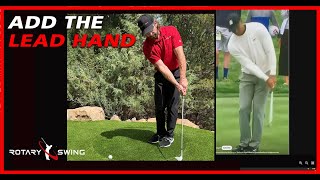


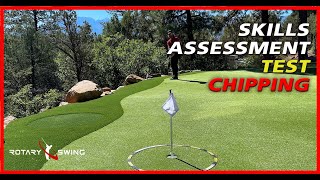
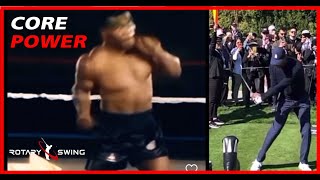
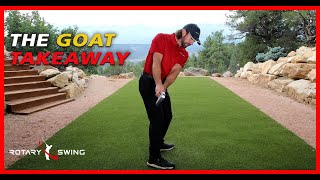
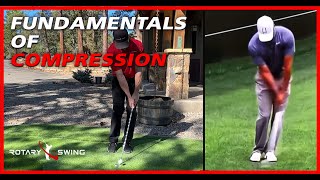
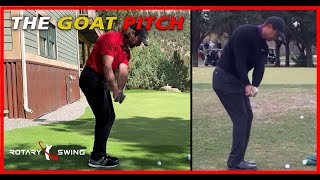
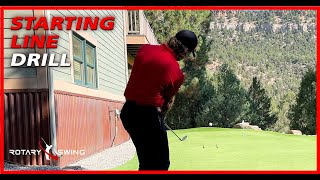

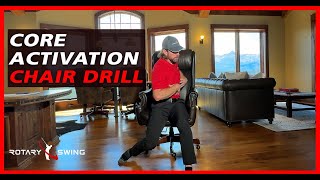
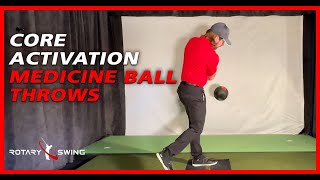
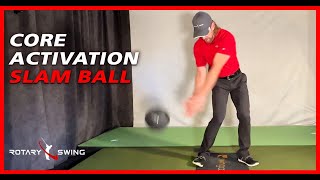
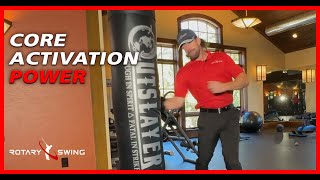
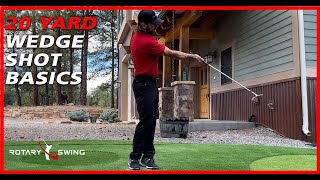
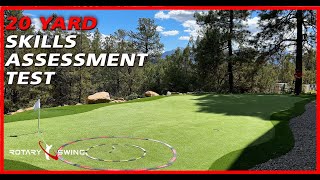
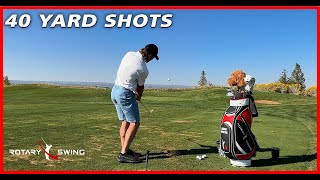
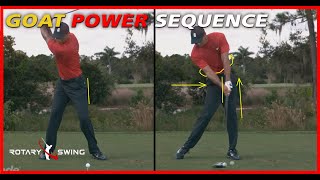
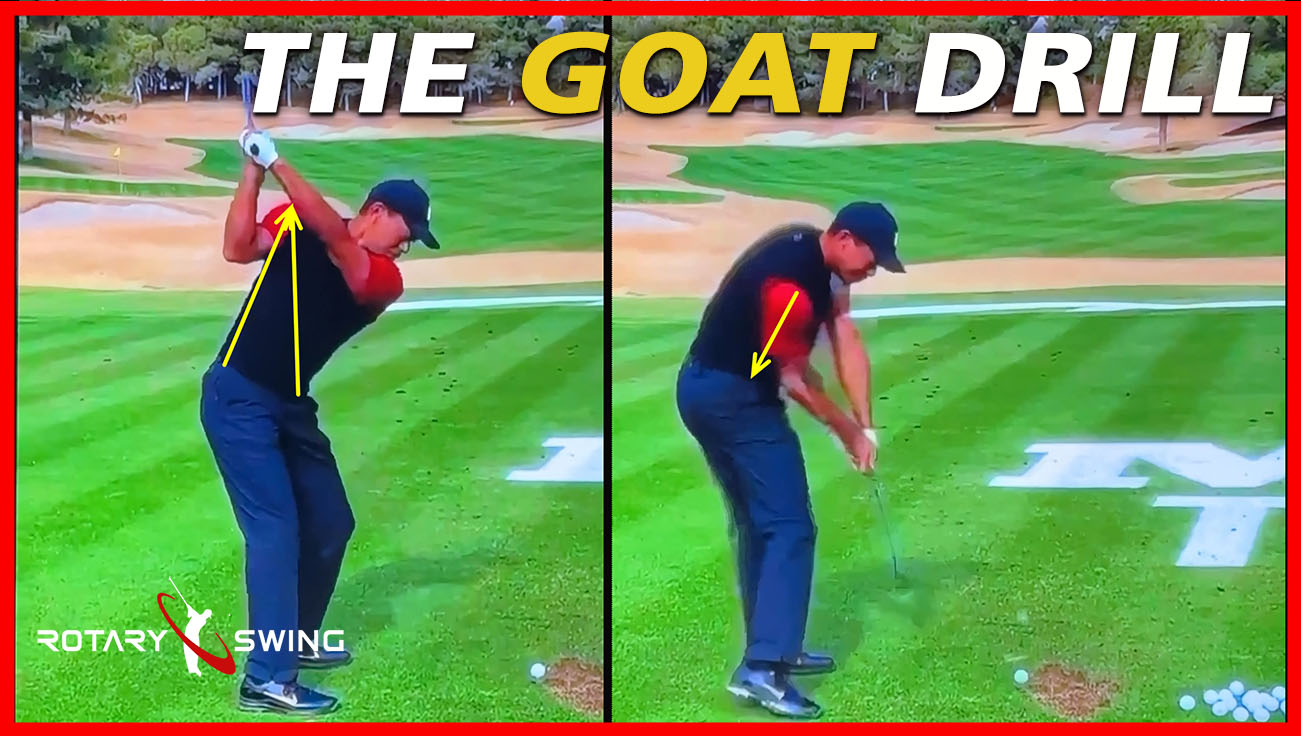
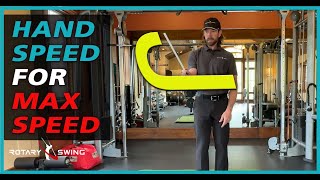

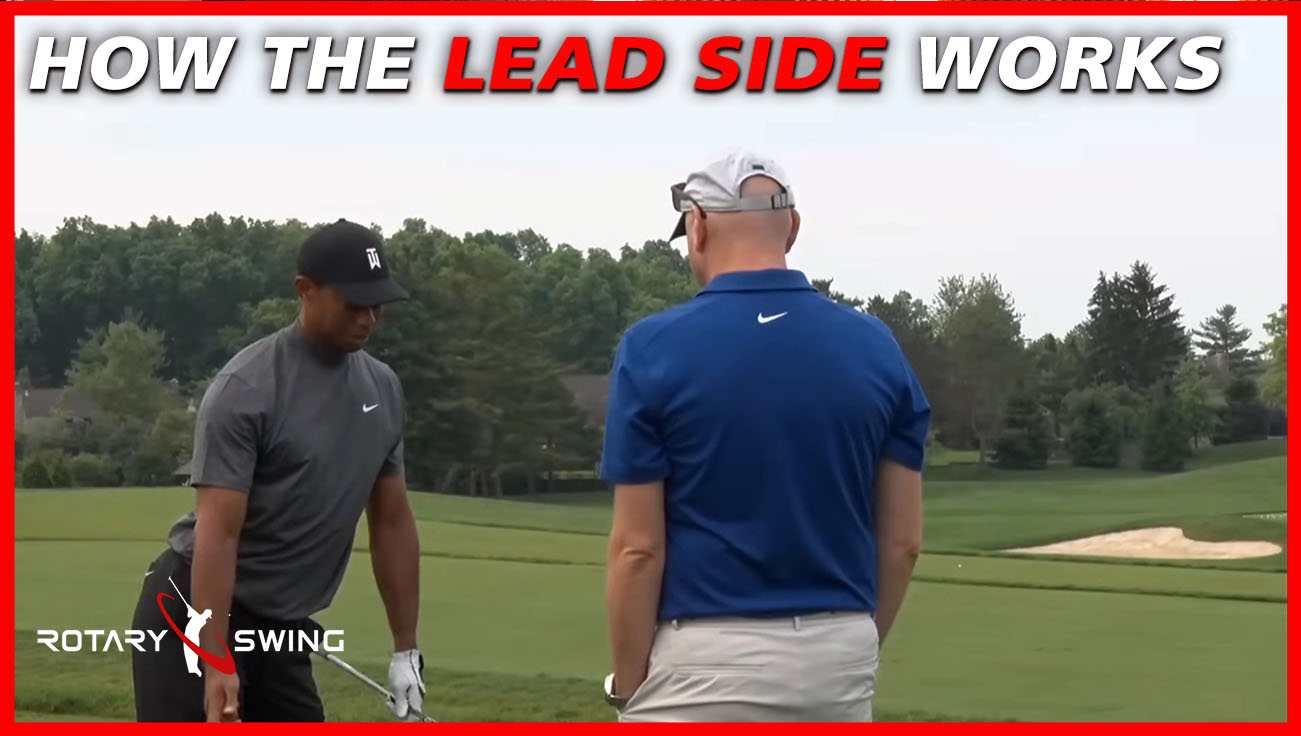
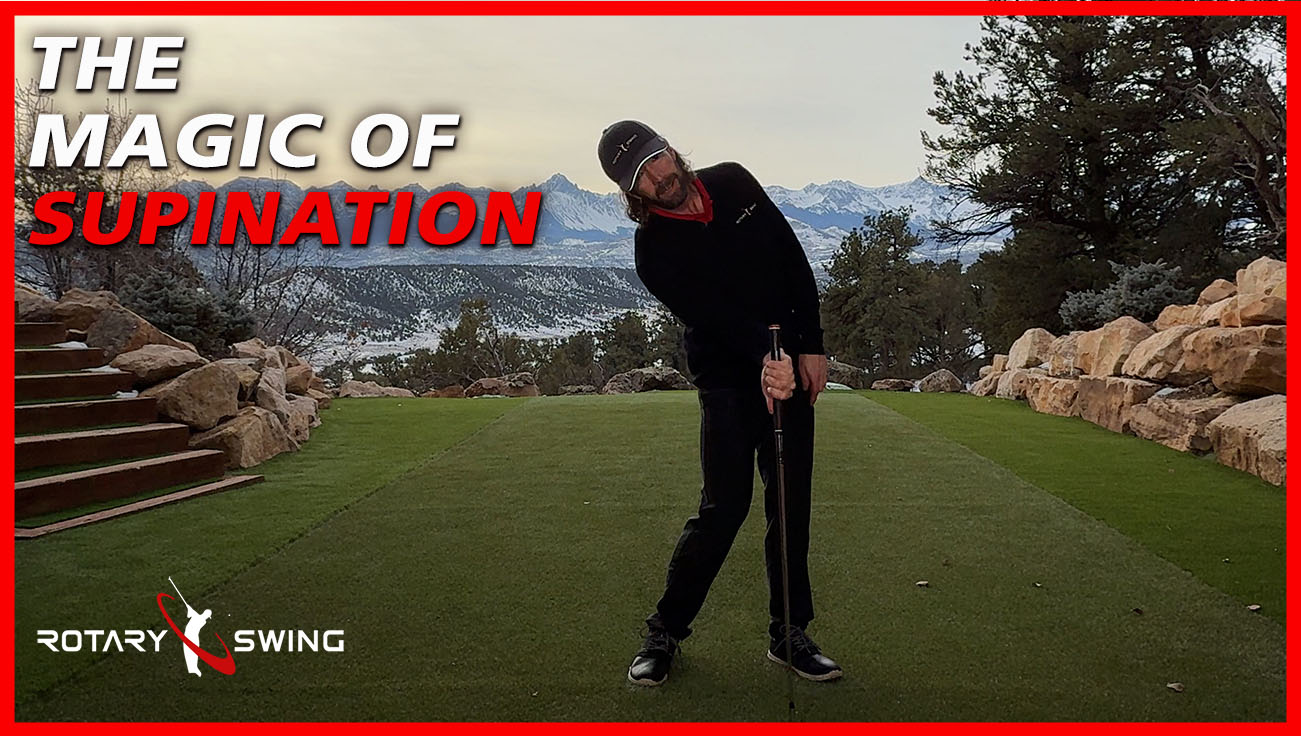

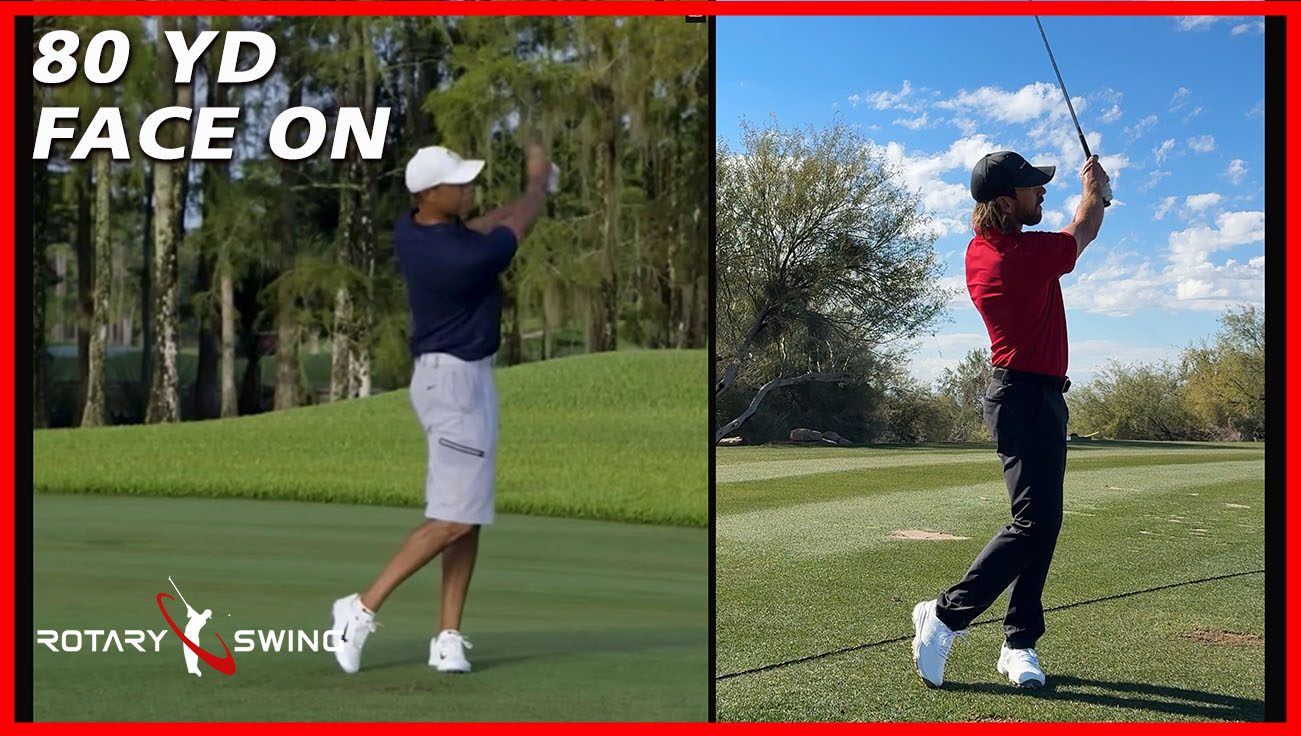
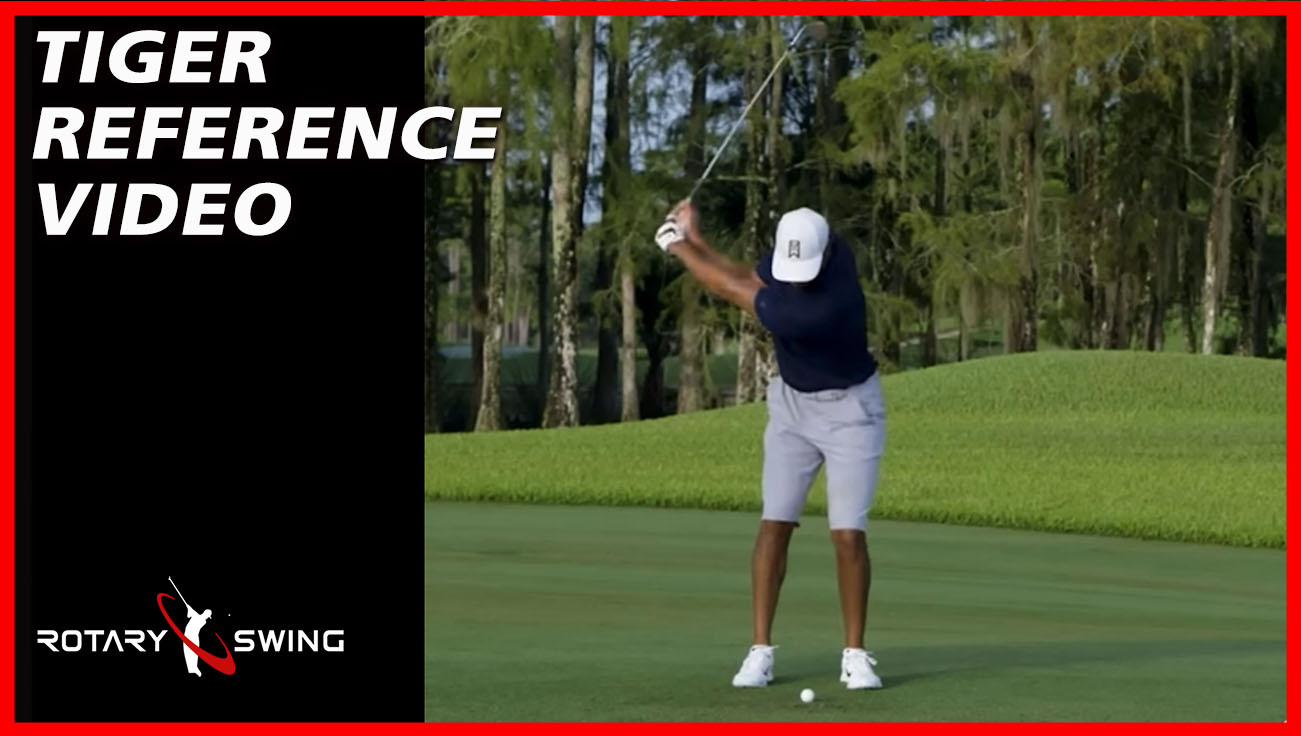

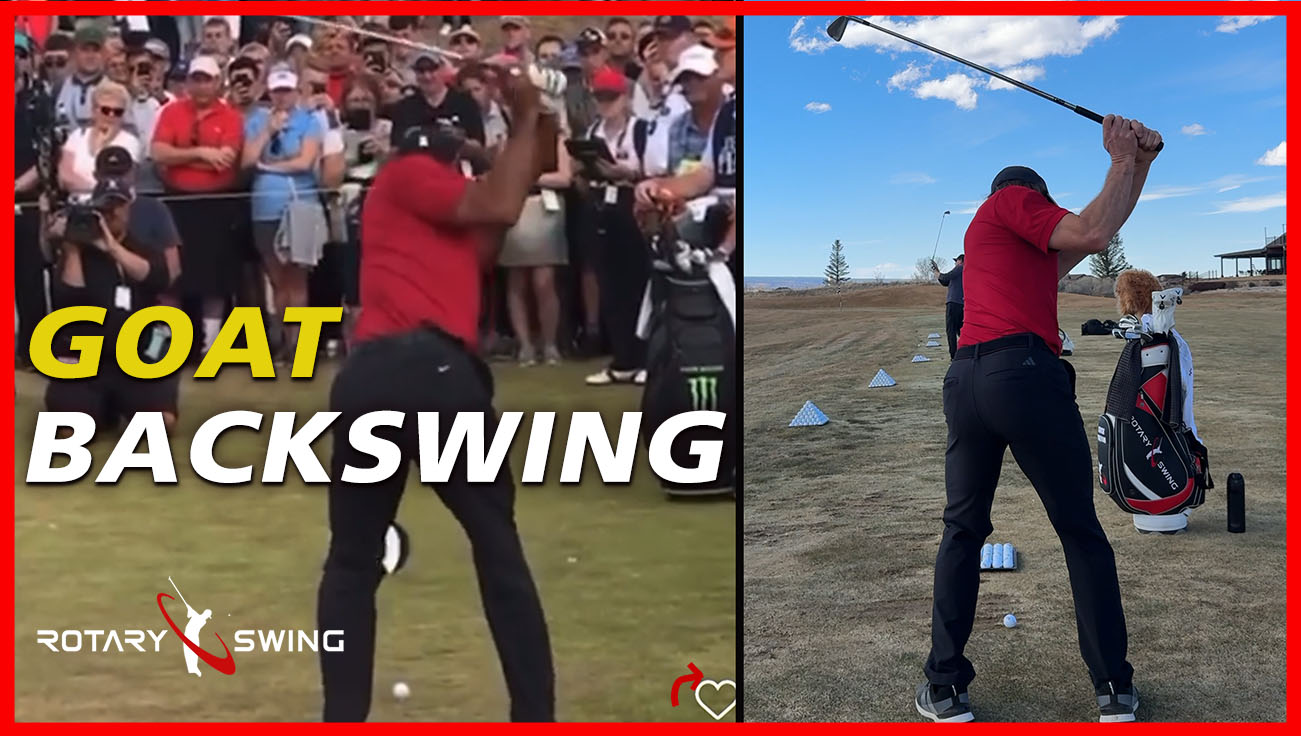
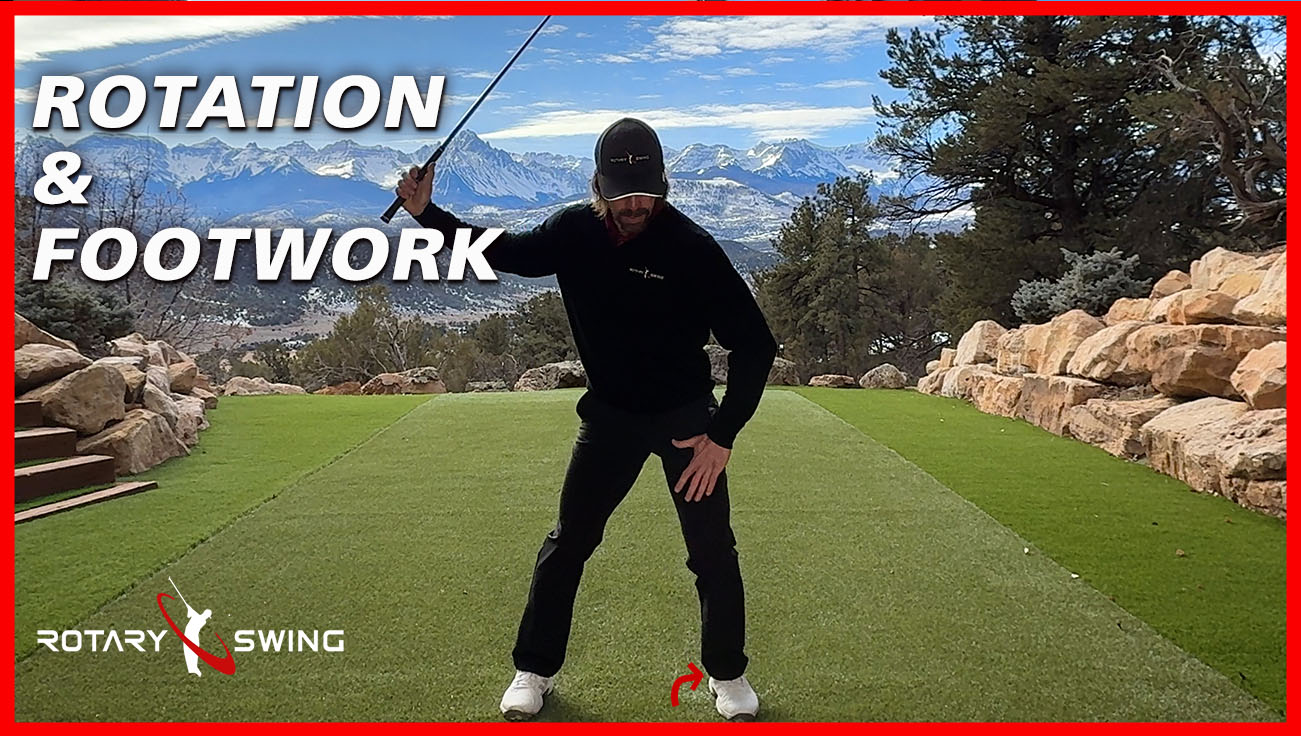
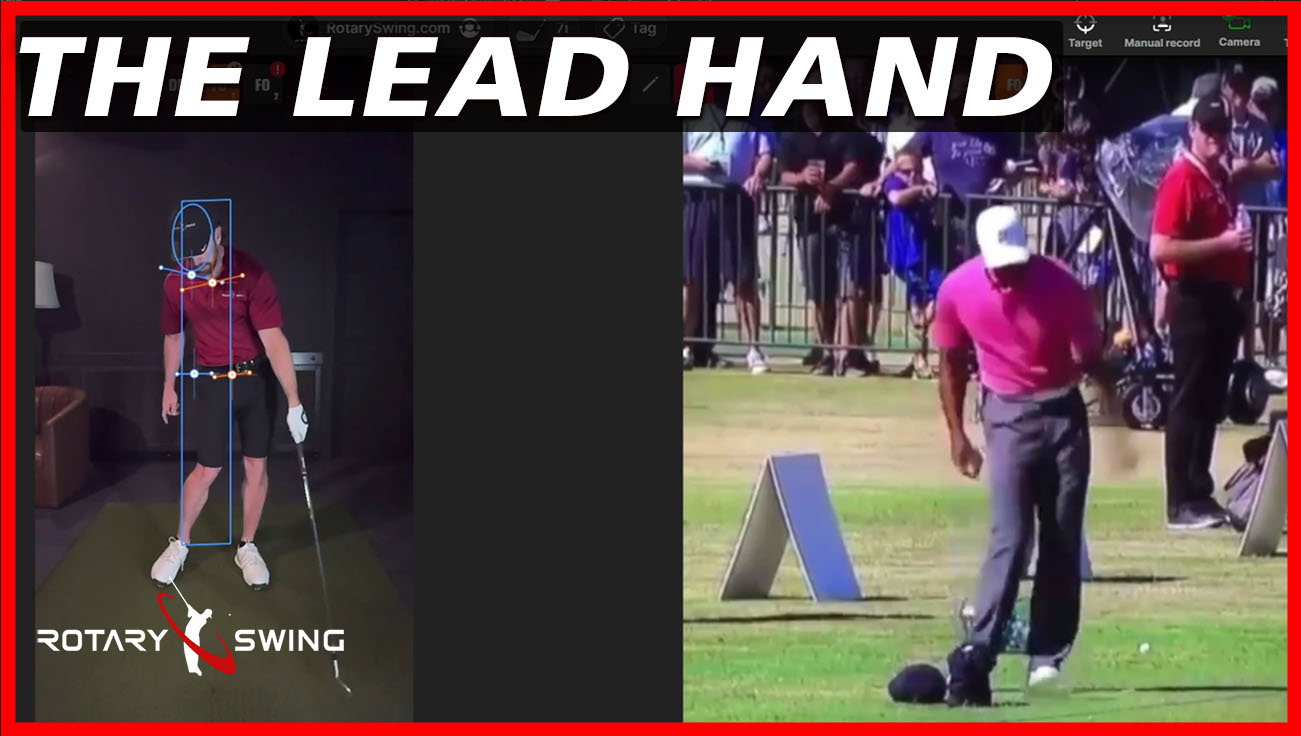
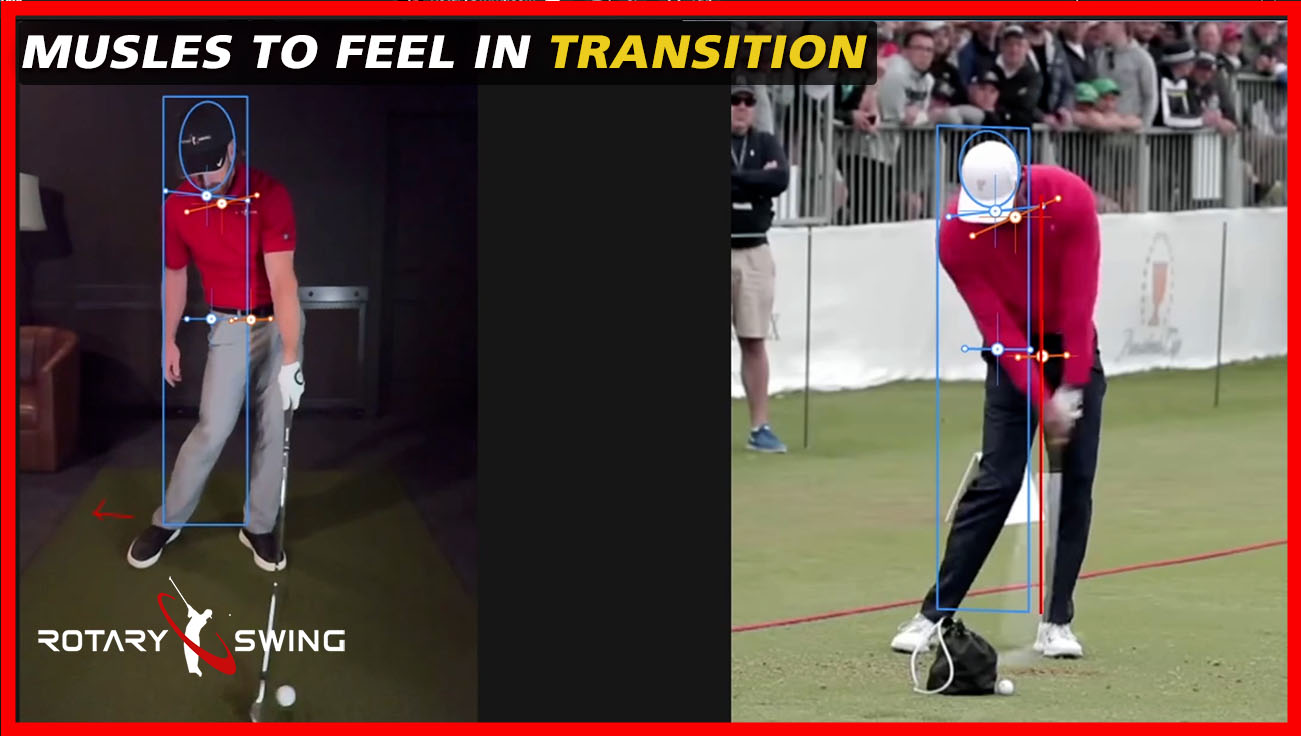
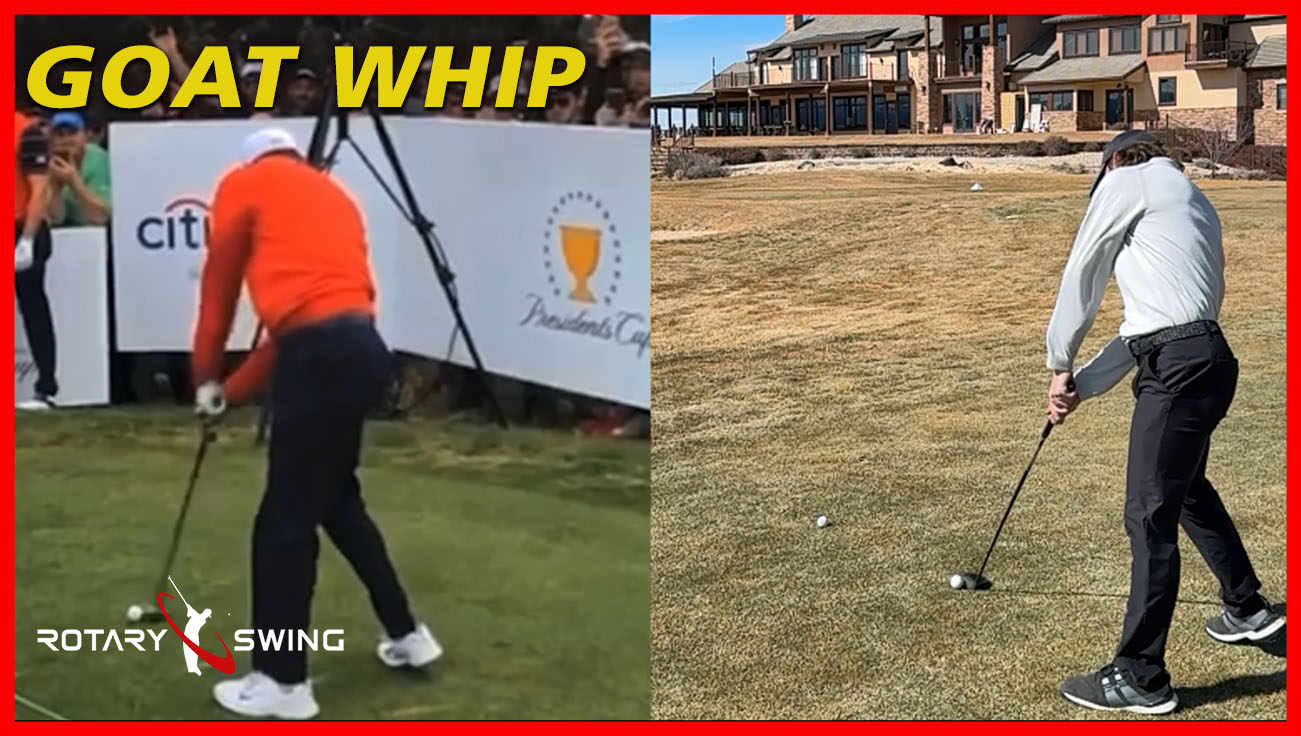
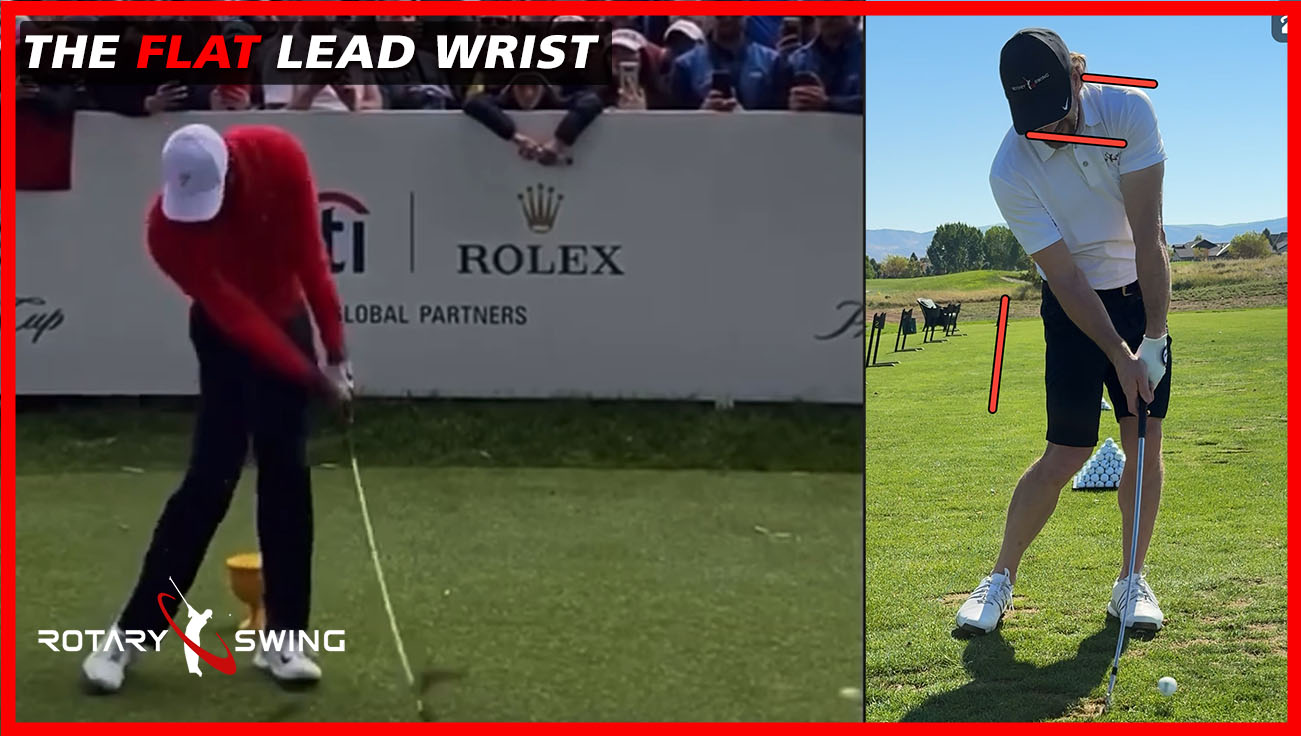
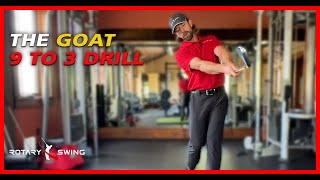
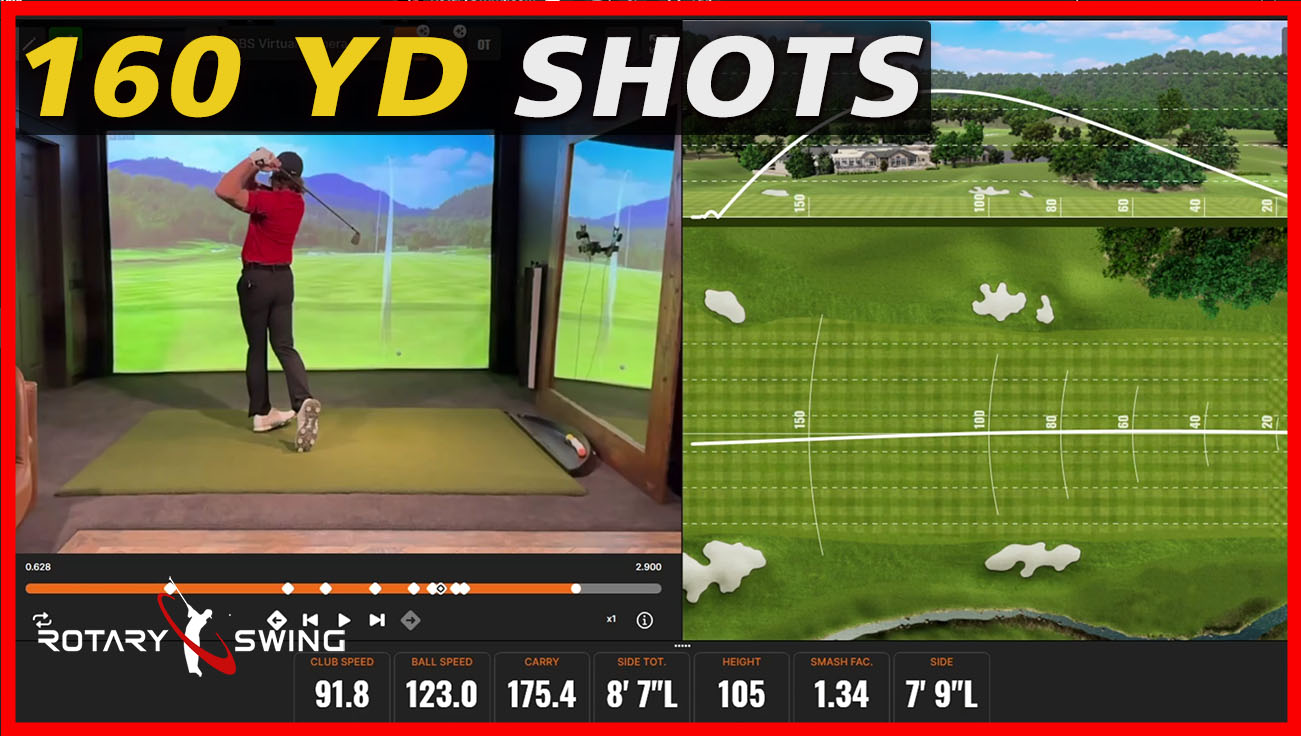
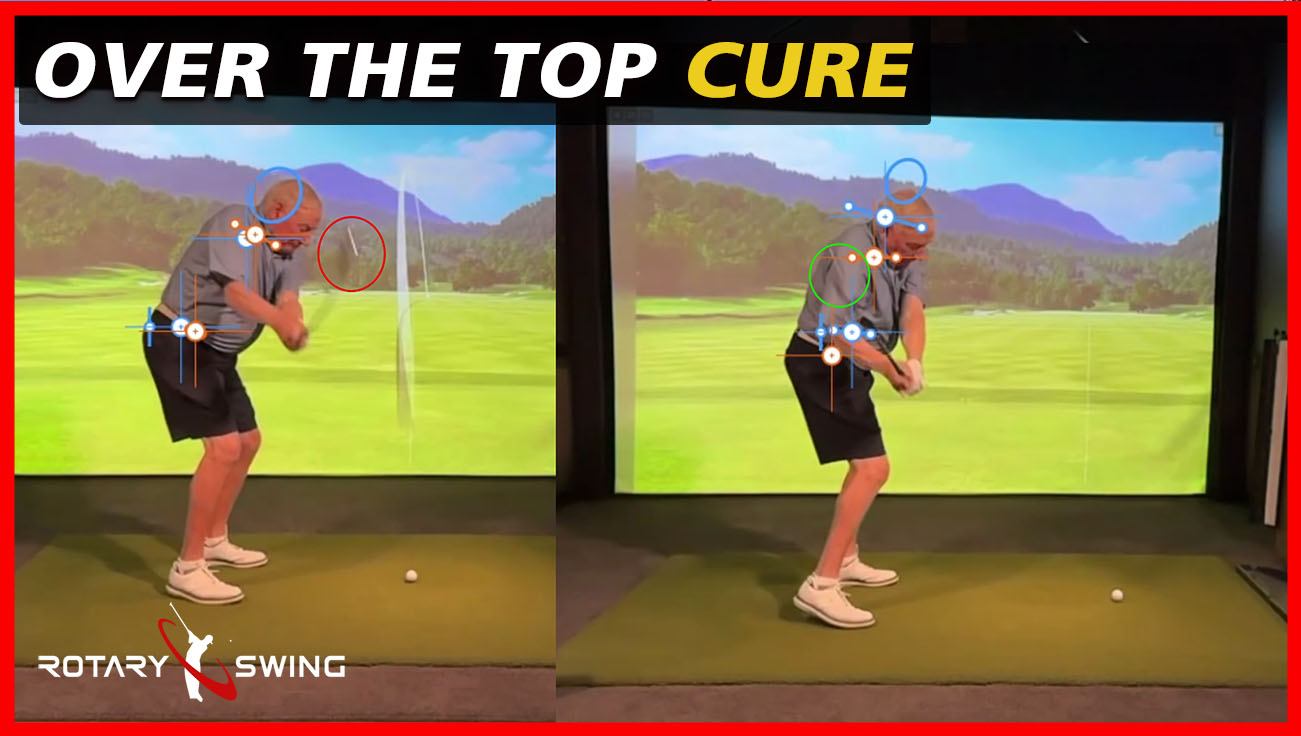

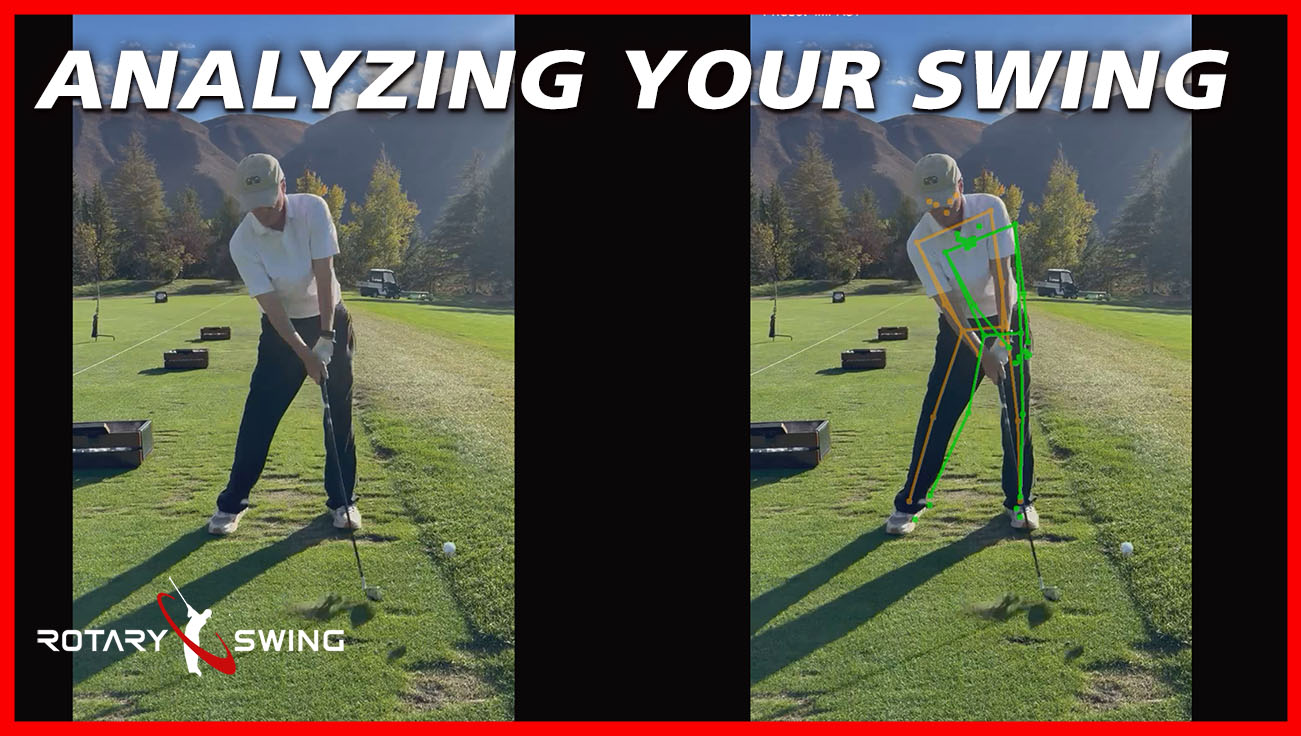
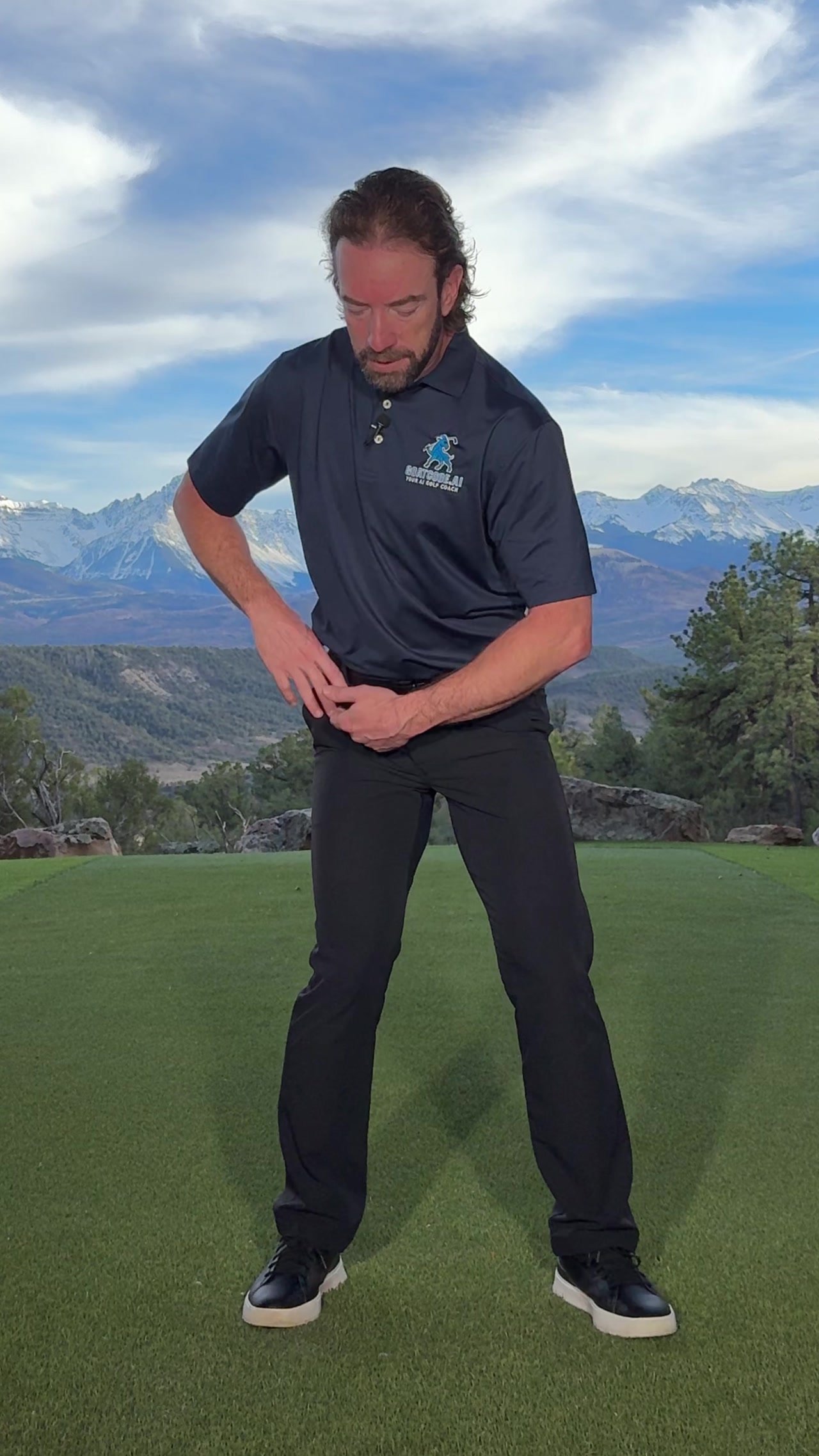
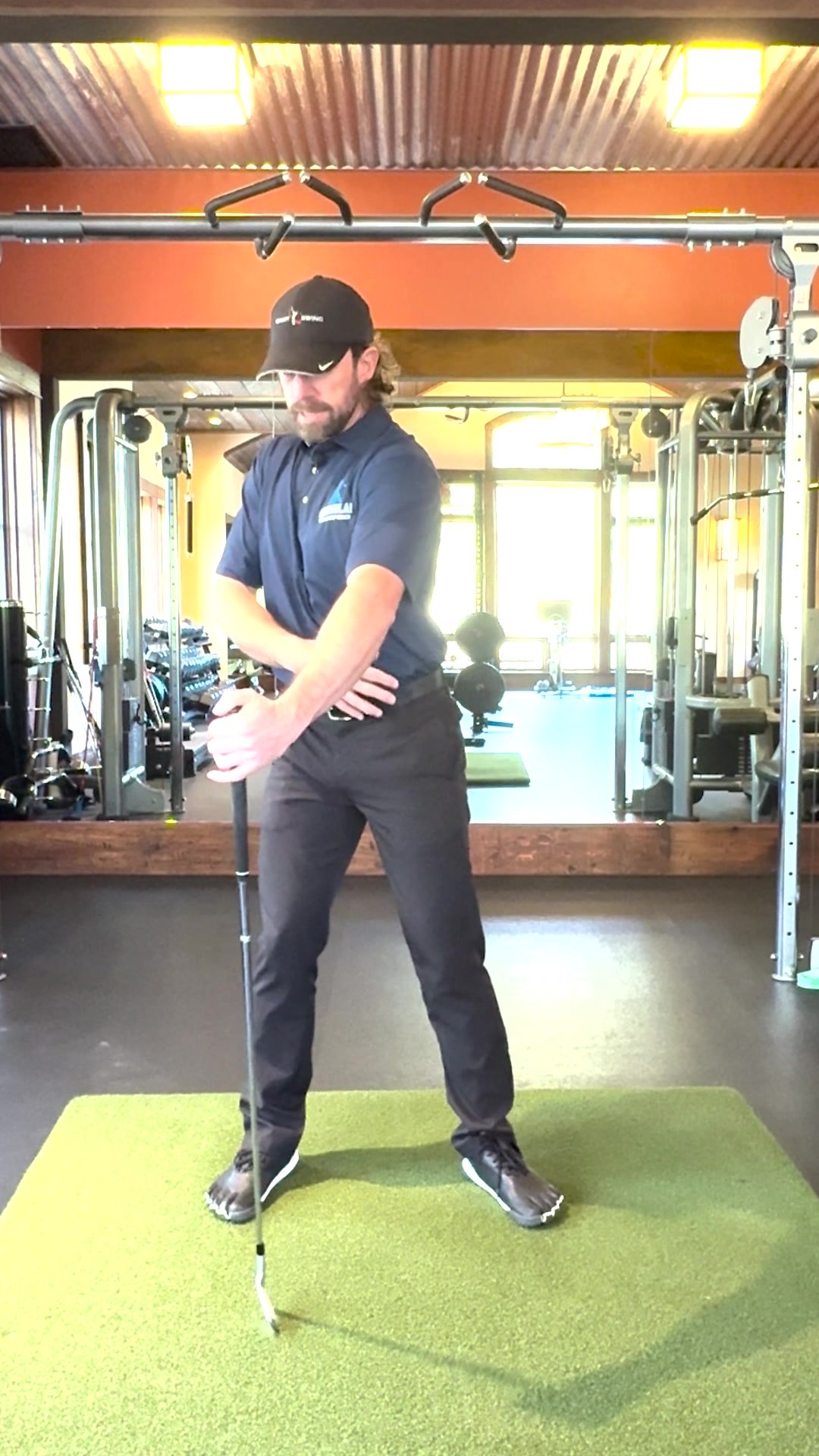
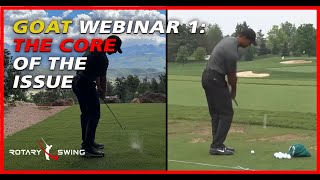
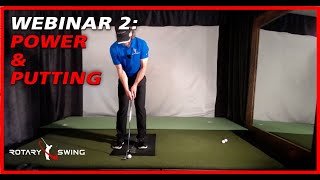
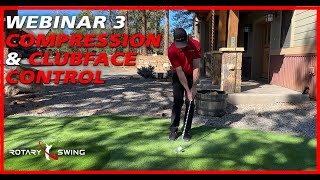
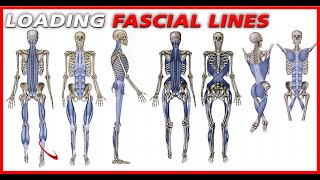
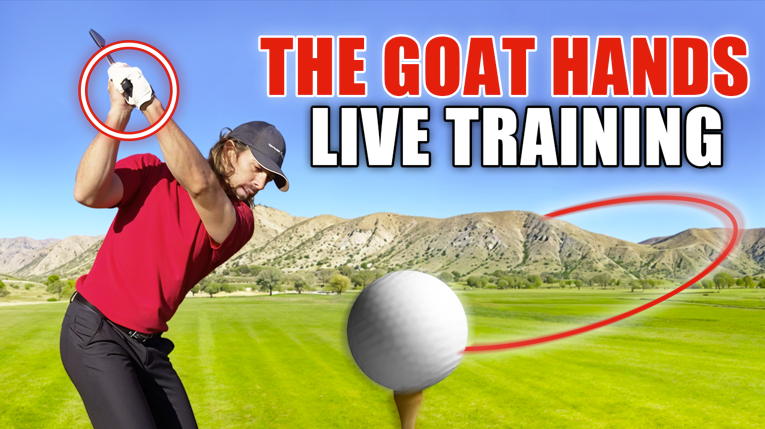

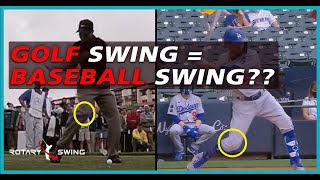
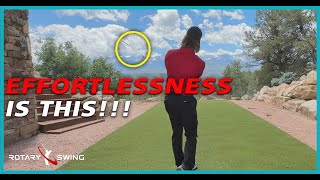

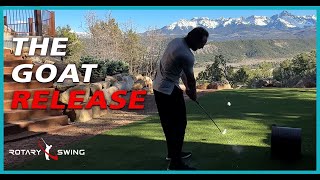
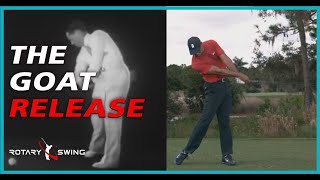
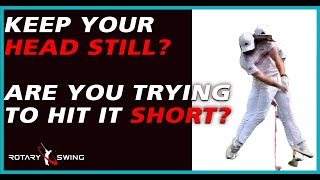
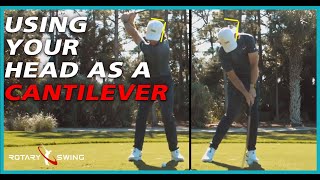
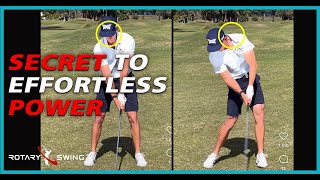
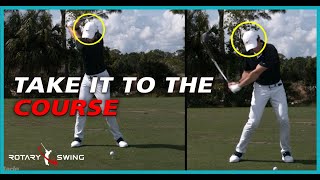
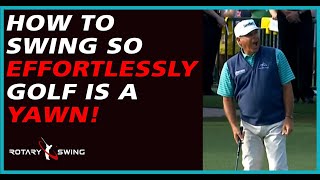
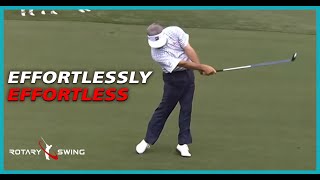
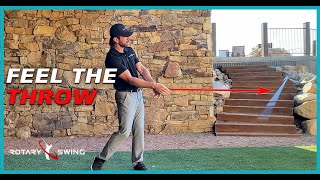
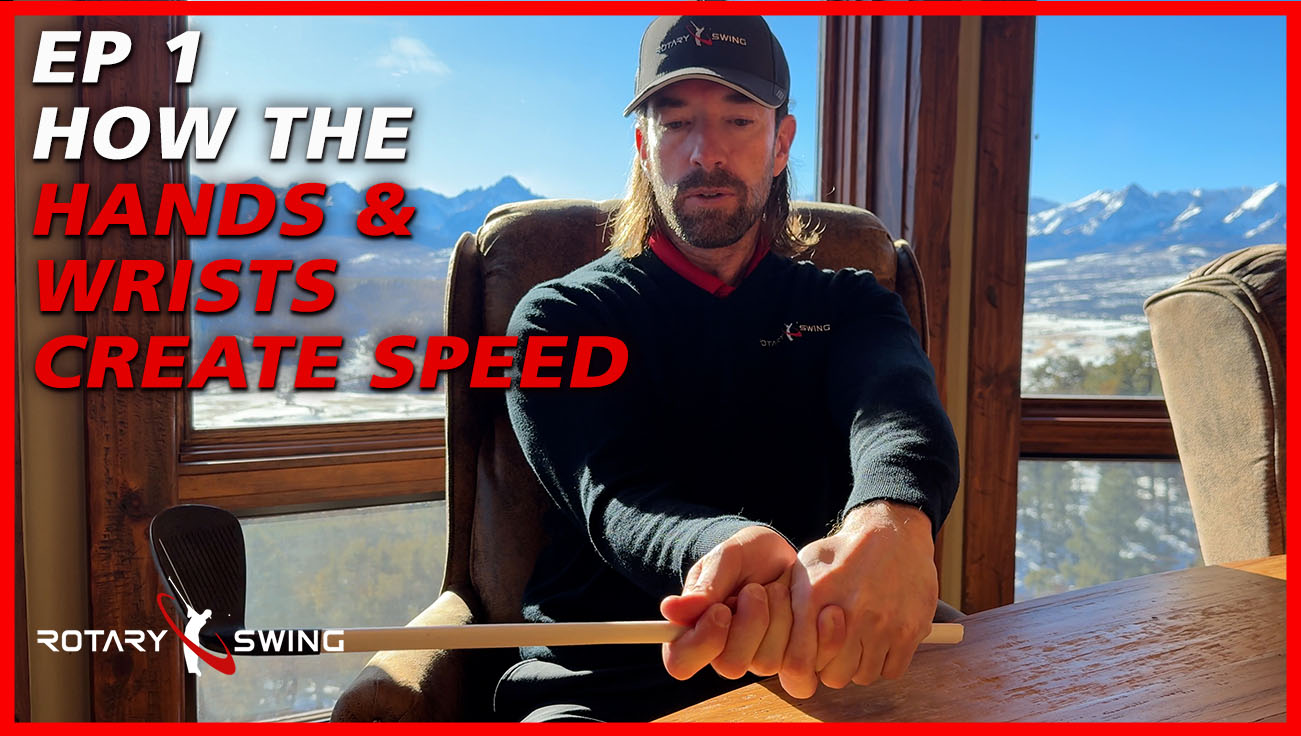

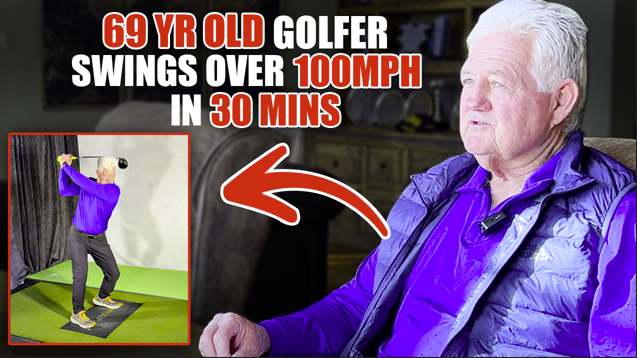

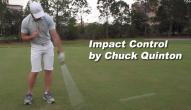
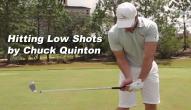
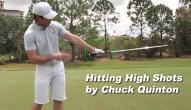
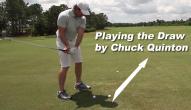
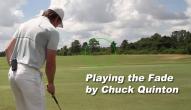
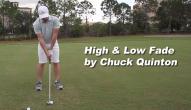
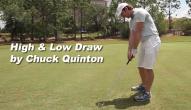
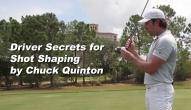
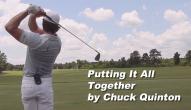
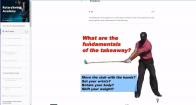

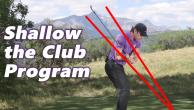
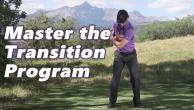
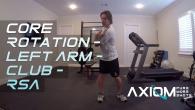
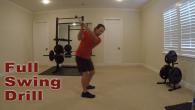

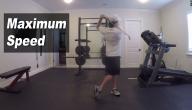
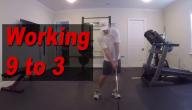
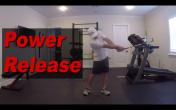
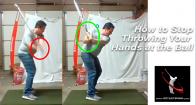
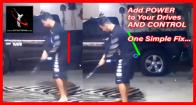
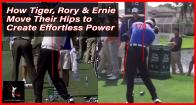
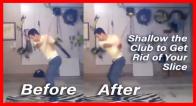

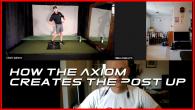
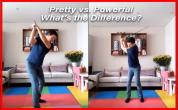
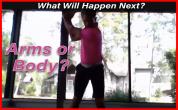
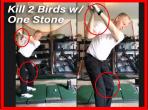
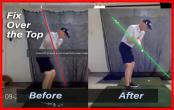
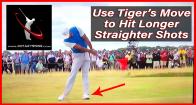
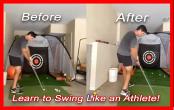
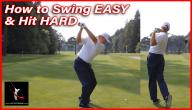
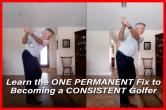
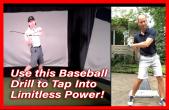
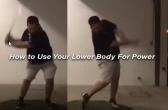
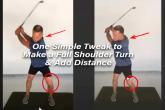
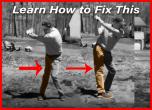
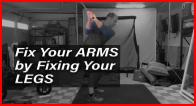
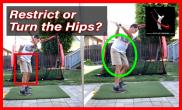
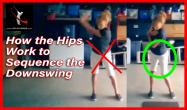

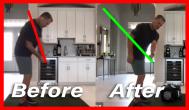
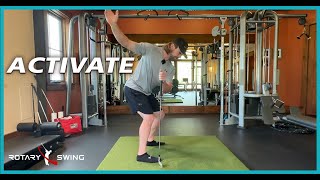

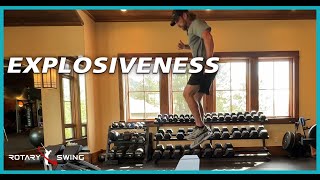
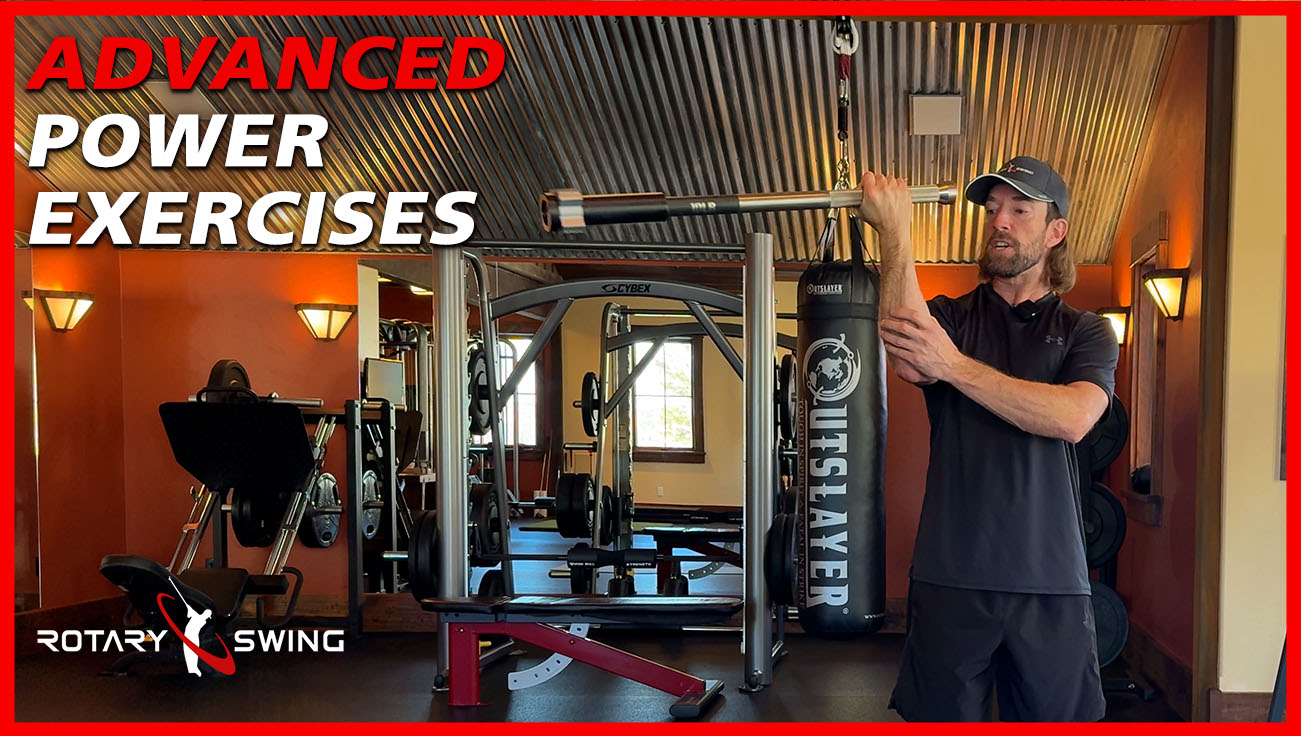
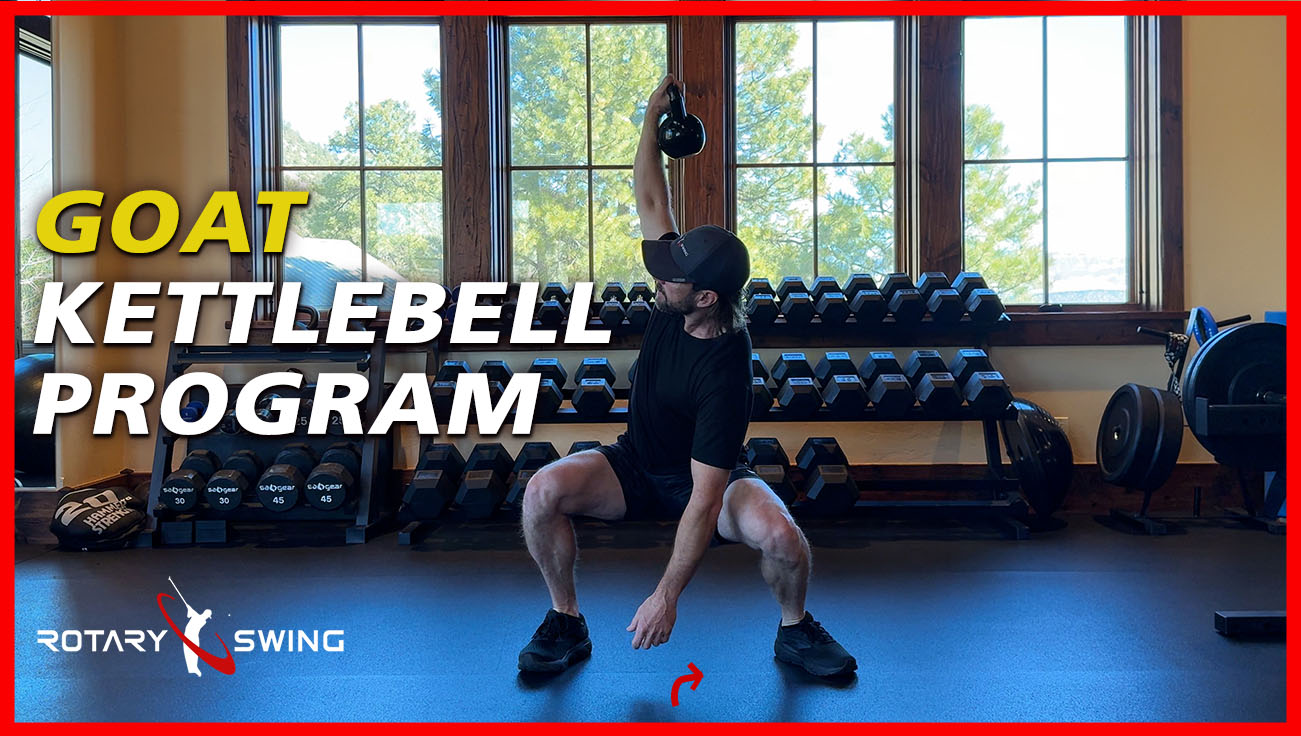

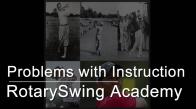
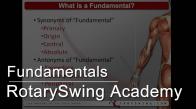

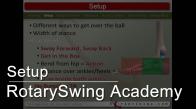
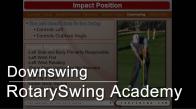
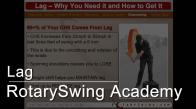
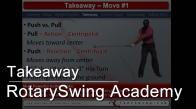
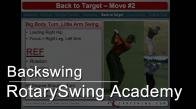
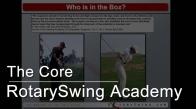
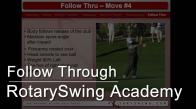

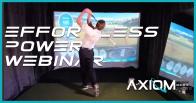


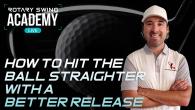
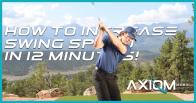
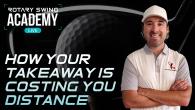

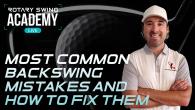
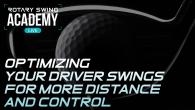
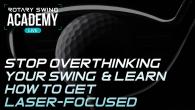


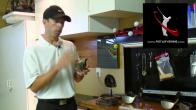
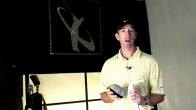
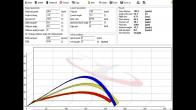
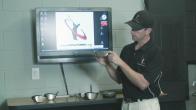
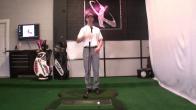
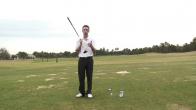
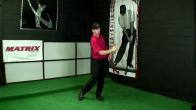
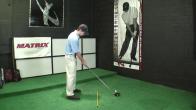
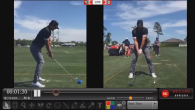
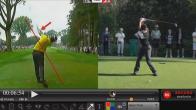
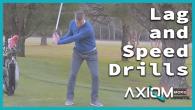
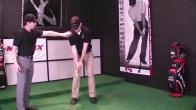
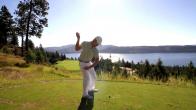
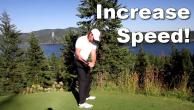
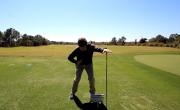
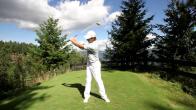
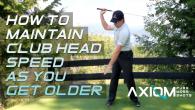
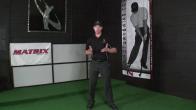
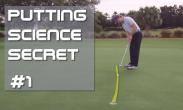
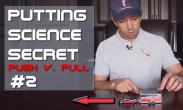
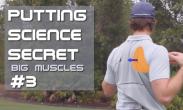
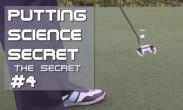
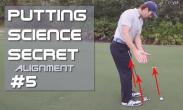
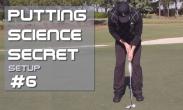
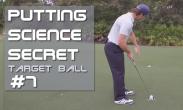
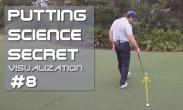
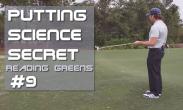
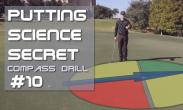
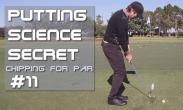
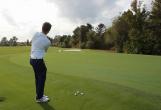

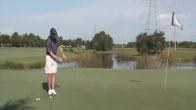
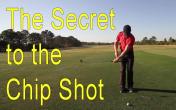
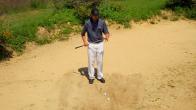
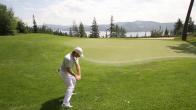
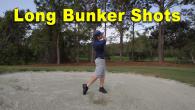
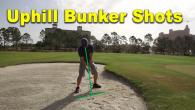
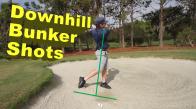
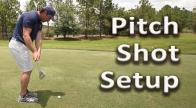
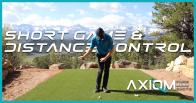
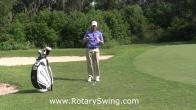
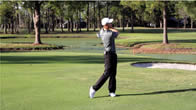
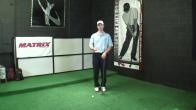


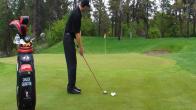
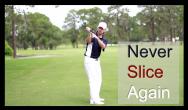
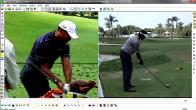
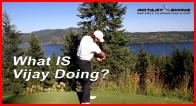
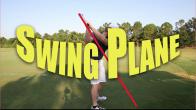
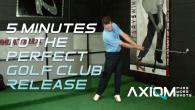
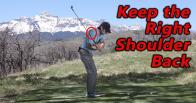
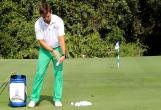
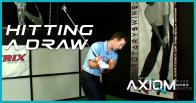





Richard
Craig (Certified RST Instructor)
Matt
Craig (Certified RST Instructor)
Chris
Craig (Certified RST Instructor)
David
Craig (Certified RST Instructor)
David
Craig (Certified RST Instructor)
Steve
Craig (Certified RST Instructor)
David
Craig (Certified RST Instructor)
charles
Craig (Certified RST Instructor)
charles
Craig (Certified RST Instructor)
charles
Craig (Certified RST Instructor)
Steve
Steve
Chuck
Chris
Chuck
Chris
David
Chuck
David
David
Chuck
David
Asle
Chuck
J david
Chuck
Chuck
Jim
Chuck